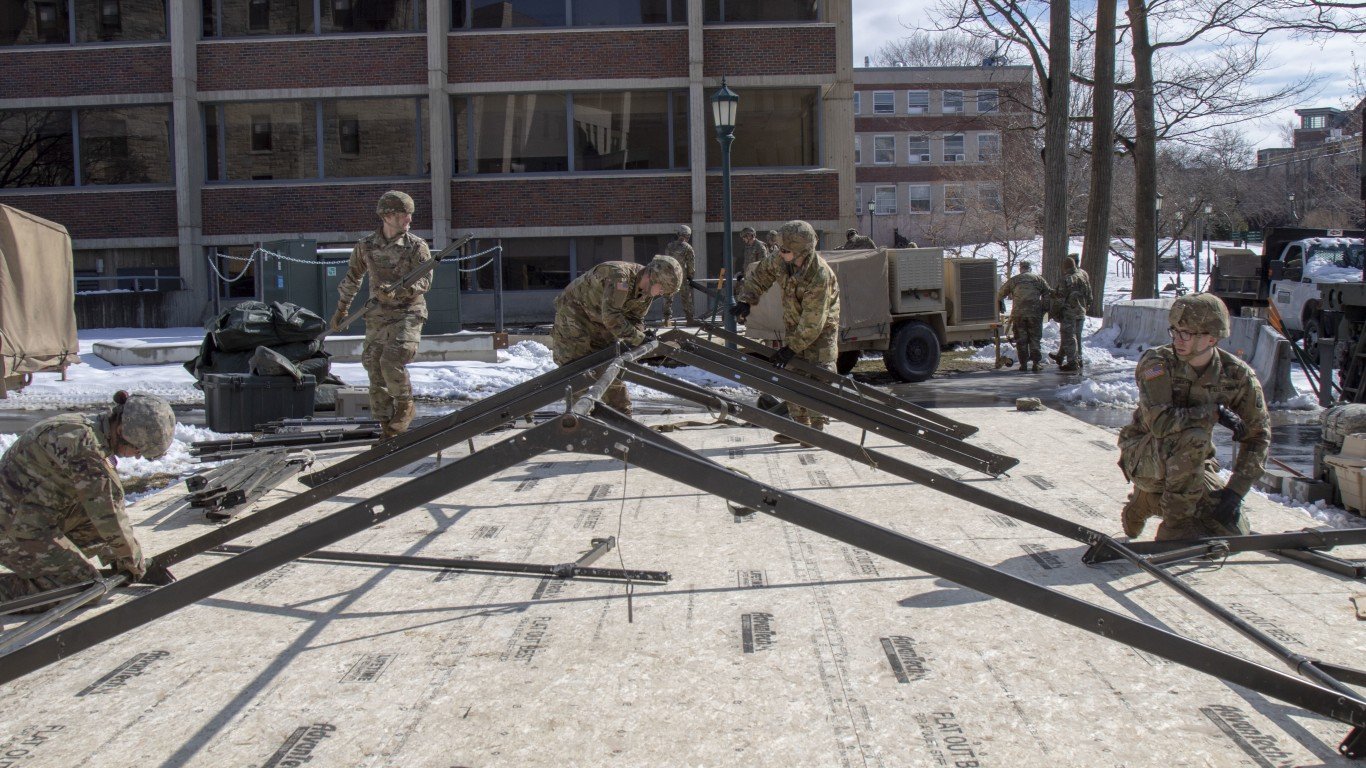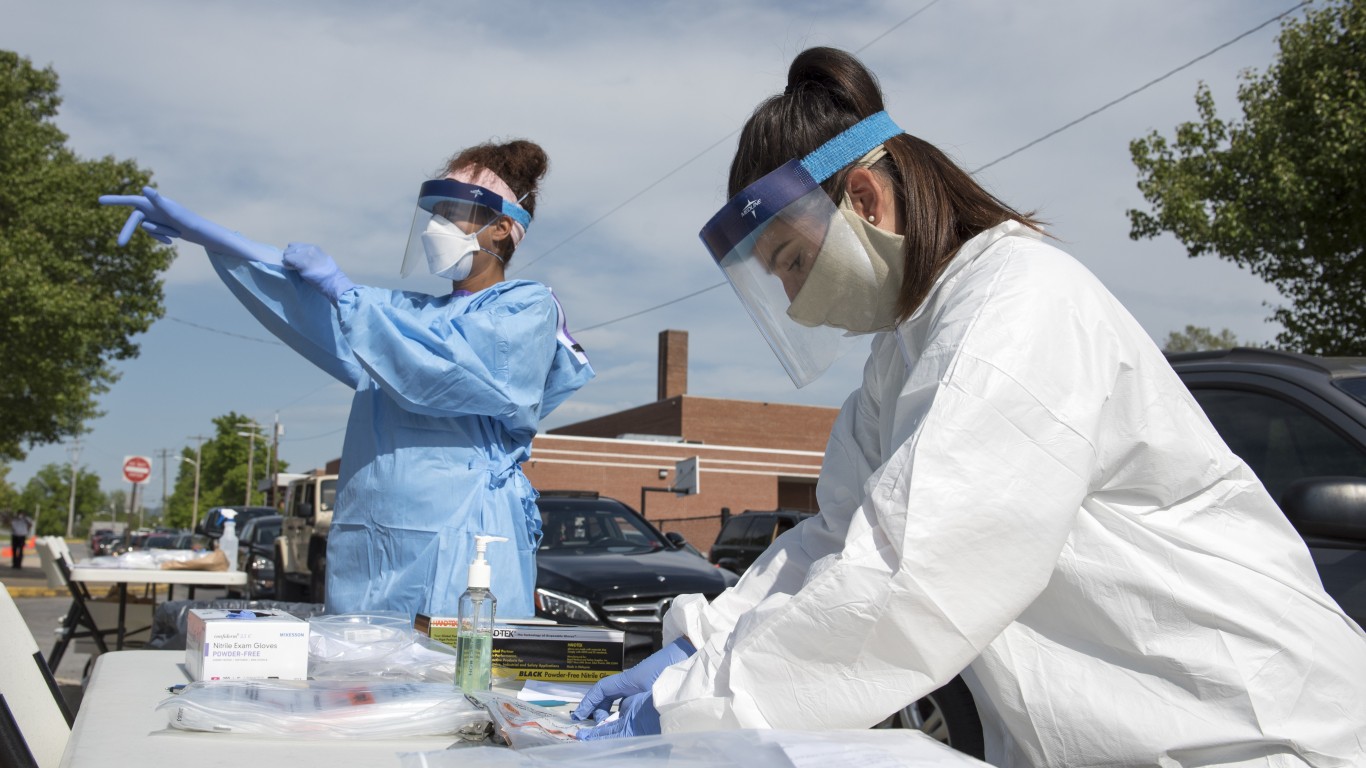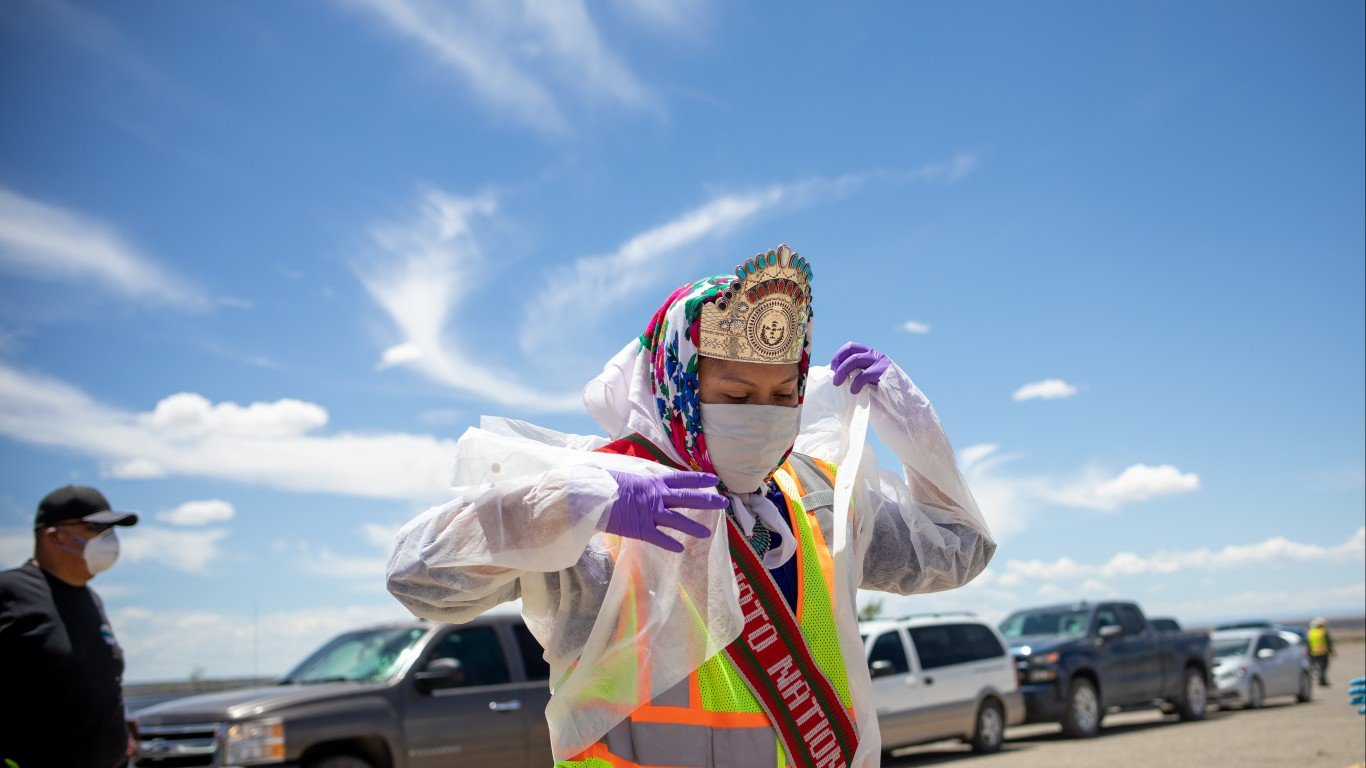

The United States has surpassed more than 2.2 million confirmed cases of COVID-19, and the death toll from the coronavirus disease has climbed to nearly 120,000 as of June 18.
Nationwide, the spread of new cases has slowed down. Over the last several weeks, all states — even New York and New Jersey where about a third of all coronavirus cases in the country were reported — have loosened some or all restrictions. But there are significant variations in how states are deciding to open their economies and allow people to gather again.
To determine each state’s social distancing measures and rules for reopening, 24/7 Wall St. reviewed executive orders from state governors over the last few weeks.
Some states began pulling back on their restriction orders and social distancing measures as early as late April, and seven states never enacted statewide stay-at-home orders at all.
Health experts are concerned that states may be opening too soon. There are already reports of a second wave in certain areas as the numbers of new COVID-19 cases and hospitalizations have recently spiked in some states. These are the states where the virus is growing fastest right now.
Click here to see every state’s rules for reopening and social distancing.
Alabama
> Cumulative COVID-19 cases as of June 18: 569 per 100,000 people — 20th highest (total: 27,796)
> COVID-19-related deaths as of June 18: 16 per 100,000 people — 23rd highest (total: 801)
> Total tests administered as of June 18: 322,124
> Change in trailing 7-day avg. daily cases, June 10 – June 17: 72.1% — 8th largest increase (439 to 755)
> Population: 4,887,871
Schools in Alabama were allowed to reopen on June 1, and students and teachers need to maintain 6 feet social distancing. Employees at educational institutions are required to wear masks. These conditions will remain in place until July 3 at the earliest. Until July 3, Alabama is under a Safer at Home order, which allows restaurants to offer food for takeout and delivery. Customers must maintain 6-foot social distancing protocols. Entertainment venues, such as arcades, movie theaters, and bowling alleys are also allowed to open, but there must be no waiting lines, people have to wear masks, and customers have to be separated by at least 6 feet. Sports practices resumed May 23, and games have been allowed to take place after June 15.
[in-text-ad]
Alaska
> Cumulative COVID-19 cases as of June 18: 94 per 100,000 people — 3rd lowest (total: 696)
> COVID-19-related deaths as of June 18: 2 per 100,000 people — 2nd lowest (total: 12)
> Total tests administered as of June 18: 77,709
> Change in trailing 7-day avg. daily cases, June 10 – June 17: 17.0% — 8th smallest increase (13 to 15)
> Population: 737,438
Travelers arriving into Alaska from another state or country now have to follow new protocols: completing a traveler declaration form; presenting results of a negative COVID-19 test taken within the previous 72 hours; or taking a test upon arrival and self-quarantining until results are known. Travelers can only use road or maritime highways, and travel to remote areas is restricted to essential travel. Alaska is in phase 3 of reopening. All businesses (in full capacity), religious gatherings, libraries, museums, recreational activities, and sport activities can open.
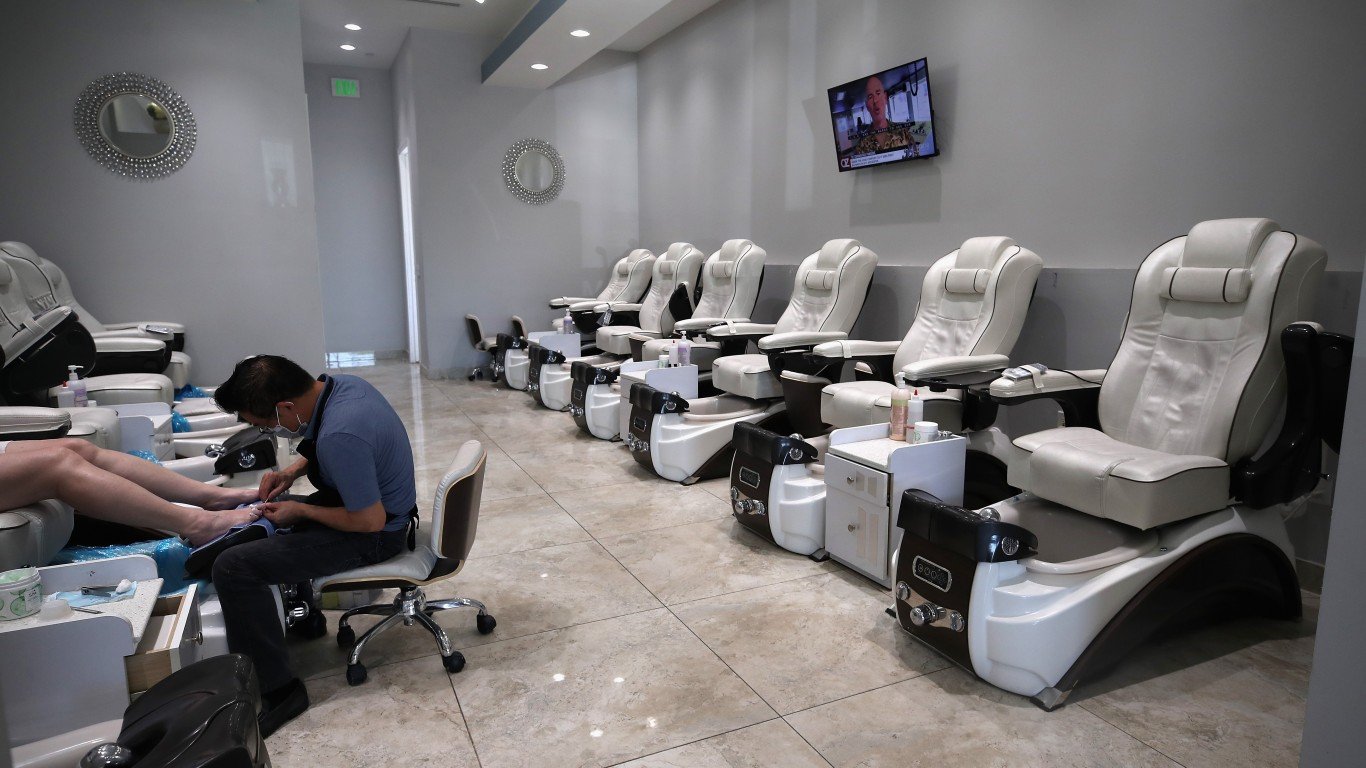
Arizona
> Cumulative COVID-19 cases as of June 18: 571 per 100,000 people — 19th highest (total: 40,924)
> COVID-19-related deaths as of June 18: 17 per 100,000 people — 22nd highest (total: 1,239)
> Total tests administered as of June 18: 365,846
> Change in trailing 7-day avg. daily cases, June 10 – June 17: 45.1% — 12th largest increase (1,090 to 1,582)
> Population: 7,171,646
The Arizona Department of Education on June 1 released reopening guidance for schools for the 2020-2021 school year. Schools will resume in-person instruction and should operate on intermittent schedules. Students should be checked for temperatures and may be required to wear masks. Schools should consider reducing class sizes.
Retail stores have opened. So have gyms, spas, movie theaters, and community swimming pools. Restaurants have resumed dine-in services. People are strongly encouraged to continue practicing social distancing. No specific date was given for the start of the second phase of the state’s reopening.
Arkansas
> Cumulative COVID-19 cases as of June 18: 451 per 100,000 people — 25th lowest (total: 13,606)
> COVID-19-related deaths as of June 18: 7 per 100,000 people — 9th lowest (total: 197)
> Total tests administered as of June 18: 220,699
> Change in trailing 7-day avg. daily cases, June 10 – June 17: 40.7% — 13th largest increase (329 to 463)
> Population: 3,013,825
Establishments like gyms and barbershops began reopening in early May. High school and community sports teams were allowed to resume practice events starting June 1, under strict measures. Gov. Asa Hutchinson postponed in-person graduation ceremonies until at least July 1. Short-term rentals such as hotels, motels, and vacation rentals are limited to “authorized guests,” which include national guard members, first responders, homeless people, and journalists. Visitors coming from other countries or Connecticut, New Jersey, New Orleans, or New York are required to self-quarantine for 14 days.
Arkansas entered phase 2 of reopening on June 15. Restaurants and other businesses can now expand to two-thirds capacity, up from a third of their capacity under phase 1. Summer day camps are open but class sizes are limited to no more than 10 people. Camp enrollment is limited in order to allow proper physical distancing.
[in-text-ad-2]
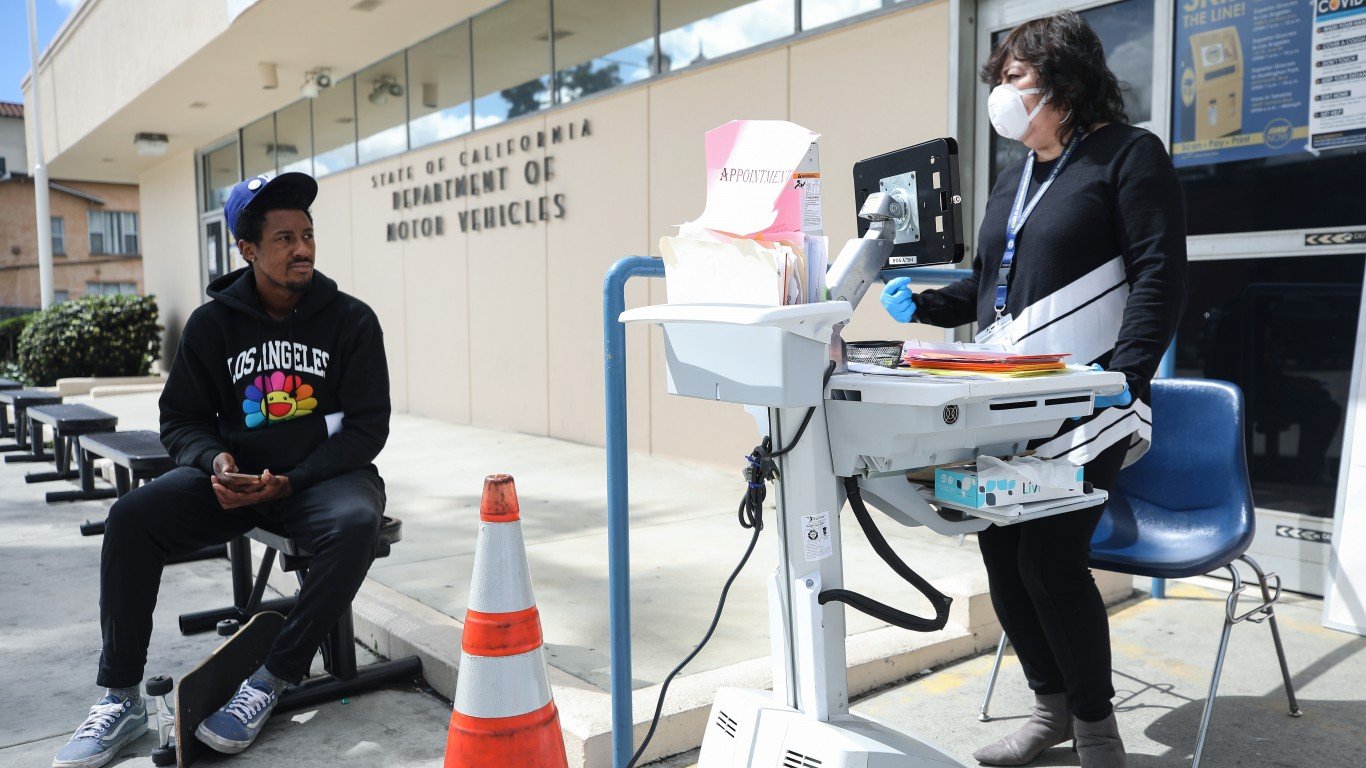
California
> Cumulative COVID-19 cases as of June 18: 397 per 100,000 people — 17th lowest (total: 157,015)
> COVID-19-related deaths as of June 18: 13 per 100,000 people — 23rd lowest (total: 5,208)
> Total tests administered as of June 18: 2,997,988
> Change in trailing 7-day avg. daily cases, June 10 – June 17: 12.5% — 7th smallest increase (2,643 to 2,975)
> Population: 39,557,045
A stay-at-home order, which has no set end date, is still in effect, though some restrictions have already been lifted. The state is reopening at the county level, with counties that meet specific criteria allowed to lift certain restrictions. An increase in COVID-19 cases in early June may delay reopening in certain counties.
Music, TV and film production, as well as professional sports (without fans) have been able to resume operations subject to approval by county public health officials since June 12. Nail and hair salons, tattoo parlors, massage parlors, and other personal care services can reopen starting June 19 in approved counties. Day camps can resume activities but limit the number of people in the camp so physical distancing can be maintained. All Californians must wear masks or other face coverings while in public or in high-risk places such as stores, public transit, or hospitals.
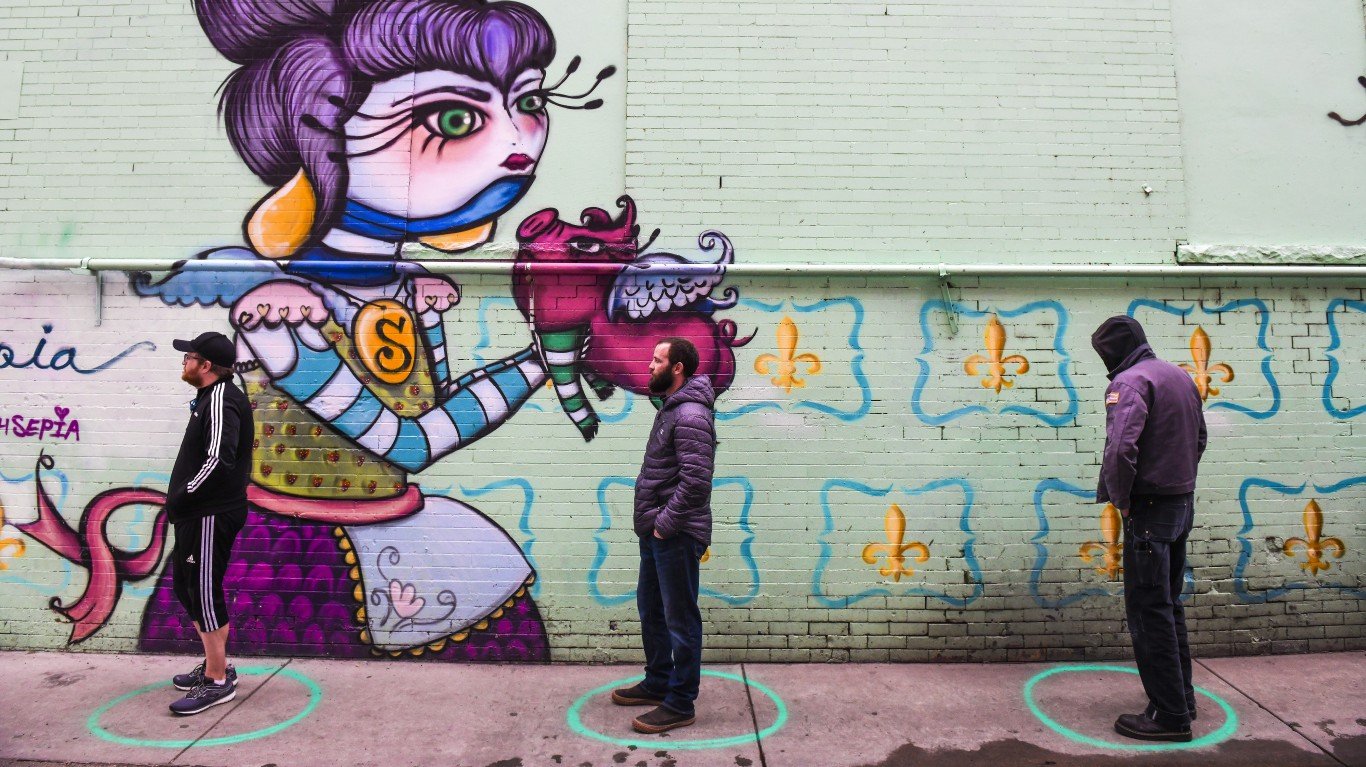
Colorado
> Cumulative COVID-19 cases as of June 18: 521 per 100,000 people — 22nd highest (total: 29,673)
> COVID-19-related deaths as of June 18: 29 per 100,000 people — 14th highest (total: 1,631)
> Total tests administered as of June 18: 259,546
> Change in trailing 7-day avg. daily cases, June 10 – June 17: -18.4% — 9th smallest decline (206 to 168)
> Population: 5,695,564
Gov. Jared Polis signed an order on June 1 shifting Colorado to a Safer at Home and in the Vast, Great Outdoors order from the previous Safer at Home order. The new order now encourages people to go outside while maintaining social distancing. Playgrounds and swimming pools are allowed to open at limited capacity. Public and private gatherings are limited to 10 people. Nonessential employees are strongly encouraged to keep working from home for at least until the end of June.
Restaurants are now allowed to serve alcoholic beverages in expanded outdoor dining spaces. After June 18, bars will be able to reopen at 25% capacity or 50 people indoors, whichever is fewer. Overnight camps will be allowed if they have no more than 25 children outdoors and 10 indoors. Cosmetic and personal services can reopen as well. Indoor gatherings of up to 100 people and outdoor events of up to 175 people can resume, as long as people can stay at least 6 feet apart.
[in-text-ad]
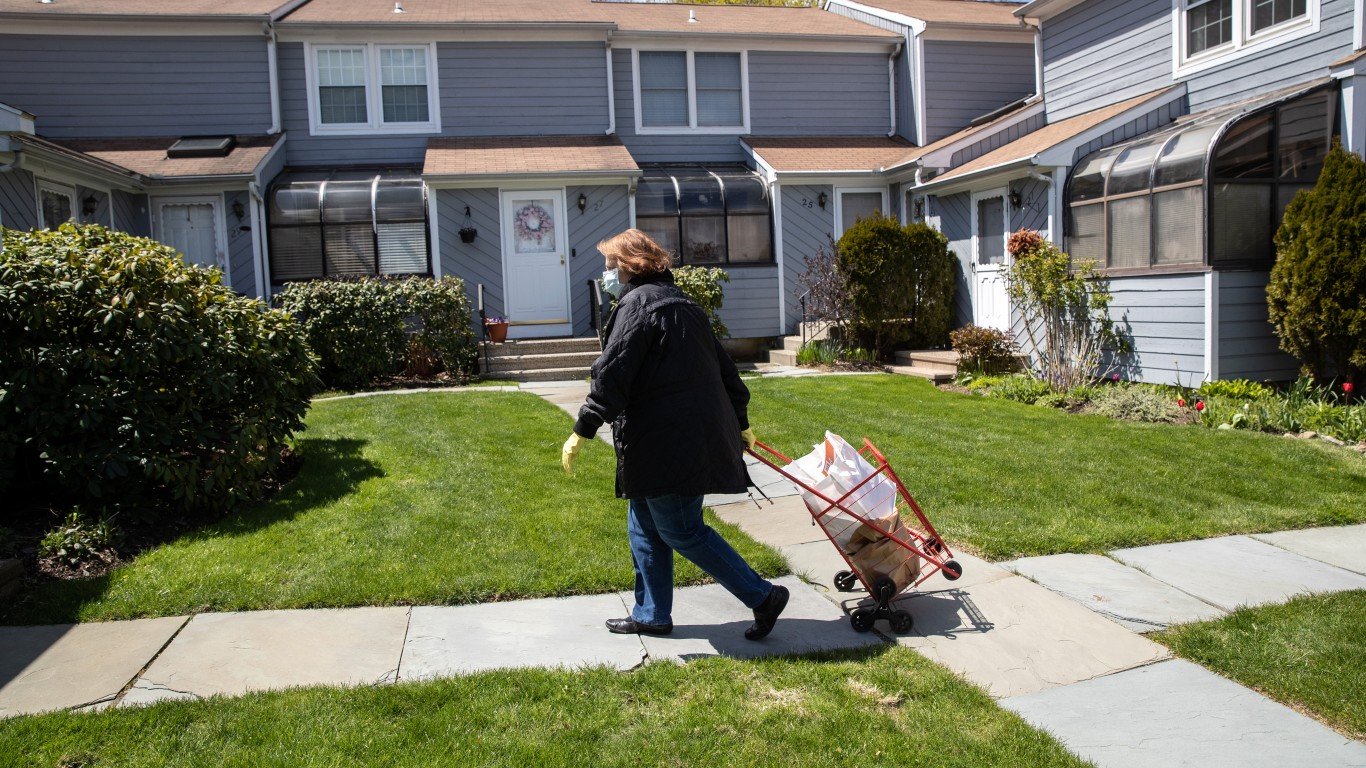
Connecticut
> Cumulative COVID-19 cases as of June 18: 1,272 per 100,000 people — 5th highest (total: 45,429)
> COVID-19-related deaths as of June 18: 118 per 100,000 people — 3rd highest (total: 4,219)
> Total tests administered as of June 18: 365,916
> Change in trailing 7-day avg. daily cases, June 10 – June 17: -11.5% — 3rd smallest decline (175 to 155)
> Population: 3,572,665
Connecticut announced that summer camps will be allowed to open on June 29, in compliance with state requirements. As of June 1, barbershops, hair salons, and tribal casinos were allowed to reopen. Gov. Ned Lamont’s order on limits on social gatherings was amended, and as of June 1, outdoor gatherings of up to 25 people were allowed, in compliance with social distancing protocols of 6 feet apart and wearing of masks. As of June 2, child care facilities have been allowed to have 50 kids, up from 30. Outdoor and in-person graduation ceremonies can be held after July 6. State campgrounds will open for the season on July 8. Campers can make reservations online beginning June 20.
Delaware
> Cumulative COVID-19 cases as of June 18: 1,080 per 100,000 people — 6th highest (total: 10,444)
> COVID-19-related deaths as of June 18: 44 per 100,000 people — 11th highest (total: 426)
> Total tests administered as of June 18: 86,593
> Change in trailing 7-day avg. daily cases, June 10 – June 17: -3.8% — 2nd smallest decline (57 to 55)
> Population: 967,171
Delaware’s state museums reopened on June 1 for self-guided tours. Personal care services such as massage therapy were allowed to reopen at 30% capacity on June 8. Delaware began phase 2 of reopening on June 15, with retailers, restaurants, and other establishments allowed to expand to 60% capacity from 30% during phase 1.
Personal care businesses remain at 30% capacity. Outdoor gatherings are allowed but of no more than 250 people. Child care facilities can now open for all families but with group size limits. People are strongly encouraged to continue teleworking and keep their children at home if possible.
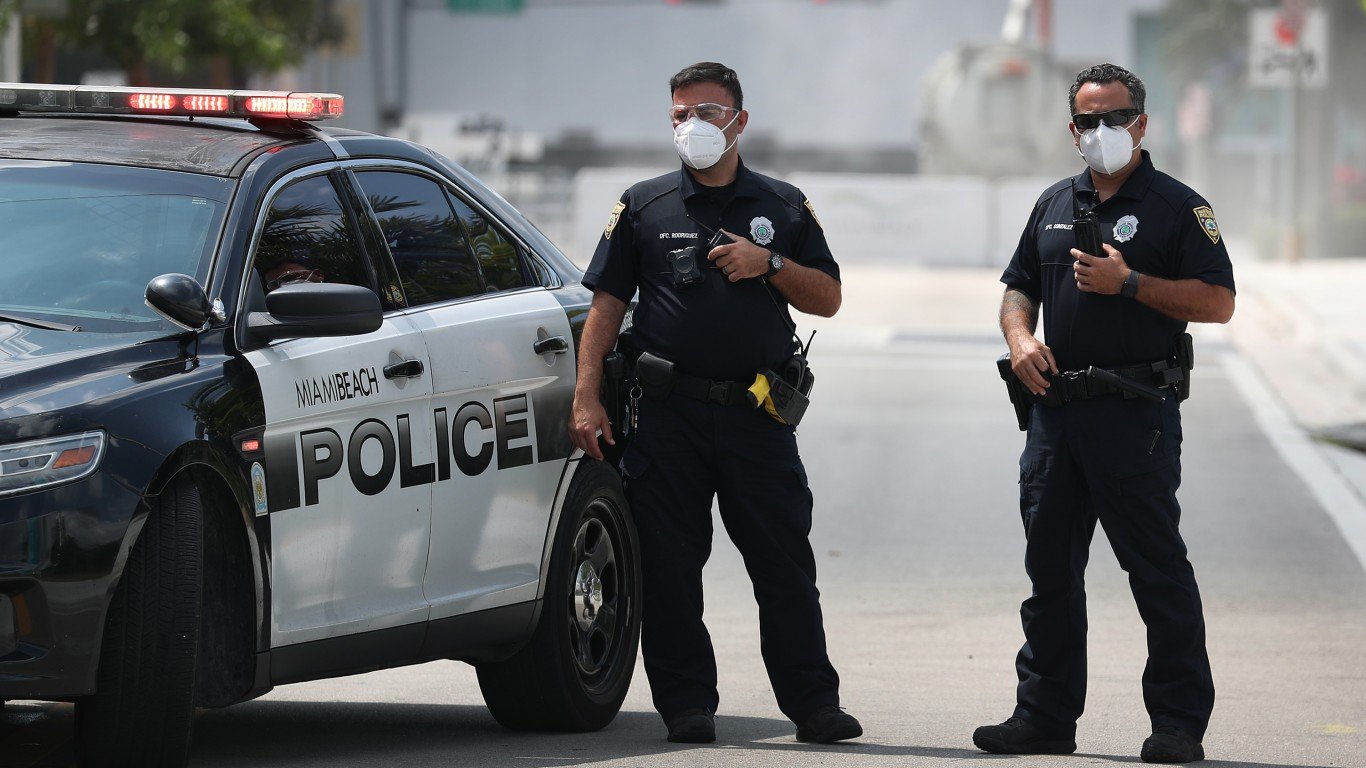
Florida
> Cumulative COVID-19 cases as of June 18: 403 per 100,000 people — 20th lowest (total: 85,926)
> COVID-19-related deaths as of June 18: 14 per 100,000 people — 24th lowest (total: 3,061)
> Total tests administered as of June 18: 1,512,315
> Change in trailing 7-day avg. daily cases, June 10 – June 17: 78.3% — 7th largest increase (1,230 to 2,193)
> Population: 21,299,325
Gov. Ron DeSantis announced phase 2 of the reopening of Florida’s economy on June 3. Under phase 2, bars and pubs may operate dine-in service at 50% capacity inside and full capacity outside. Movie theaters and entertainment venues can operate at 50% capacity also. There are restrictions on salons and barbershops. All Florida counties, except Miami-Dade, Broward, and Palm Beach, entered phase 2 on June 5.
The easing of restrictions comes as the number of new COVID-19 cases in Florida has been rising. The state Department of Health reported an increase in new cases since June 1. Residents are advised not to gather in groups of more than 50 people. Elderly people and those with preexisting conditions are encouraged to avoid crowds of any size.
[in-text-ad-2]
Georgia
> Cumulative COVID-19 cases as of June 18: 573 per 100,000 people — 18th highest (total: 60,254)
> COVID-19-related deaths as of June 18: 25 per 100,000 people — 15th highest (total: 2,587)
> Total tests administered as of June 18: 762,336
> Change in trailing 7-day avg. daily cases, June 10 – June 17: 19.0% — 10th smallest increase (732 to 871)
> Population: 10,519,475
The general shelter-in-place order expired on April 30, and the shelter-in-place order for older state residents and other at-risk individuals expired on June 12. Gatherings of 25 people or more were allowed in Georgia as of June, provided social distancing is maintained. Gov. Brian Kemp permitted amusement park rides, carnivals, circuses, and water parks to open beginning June 12 in compliance with health requirements.
Effective July 1, live performance venues can open if they meet certain criteria. There will be exceptions for drive-in performances, private recording sessions, livestream performances, rehearsals, events without spectators, and non-ticketed events. Exhibitions, trade shows, conferences, business retreats, and other conventions can be held as of July 1. Overnight summer camps are open but people can attend only if they have tested negative for COVID-19 within 12 days.

Hawaii
> Cumulative COVID-19 cases as of June 18: 52 per 100,000 people — the lowest (total: 740)
> COVID-19-related deaths as of June 18: 1 per 100,000 people — the lowest (total: 17)
> Total tests administered as of June 18: 73,078
> Change in trailing 7-day avg. daily cases, June 10 – June 17: 71.9% — 9th largest increase (5 to 8)
> Population: 1,420,491
The state lifted the 14-day quarantine requirement for those traveling between islands on June 16, but it is requiring thermal screening at the airport. Travelers may be prevented from flying if they have a temperature above 100.4 degrees Fahrenheit.
Beaches are open for recreational activities and as long as social distance is maintained. Malls, car washes, nonemergency medical visits, and retailers were allowed to reopen. The state is in phase 2 of reopening, allowing indoor gathering places and exercise facilities, as well as museums, theaters, personal services, and dine-in restaurants to reopen. Boaters can allow up to 10 people per boat (unless all people aboard are from the same household). Surf schools and kayak rentals can operate with a 10-person limit.
[in-text-ad]
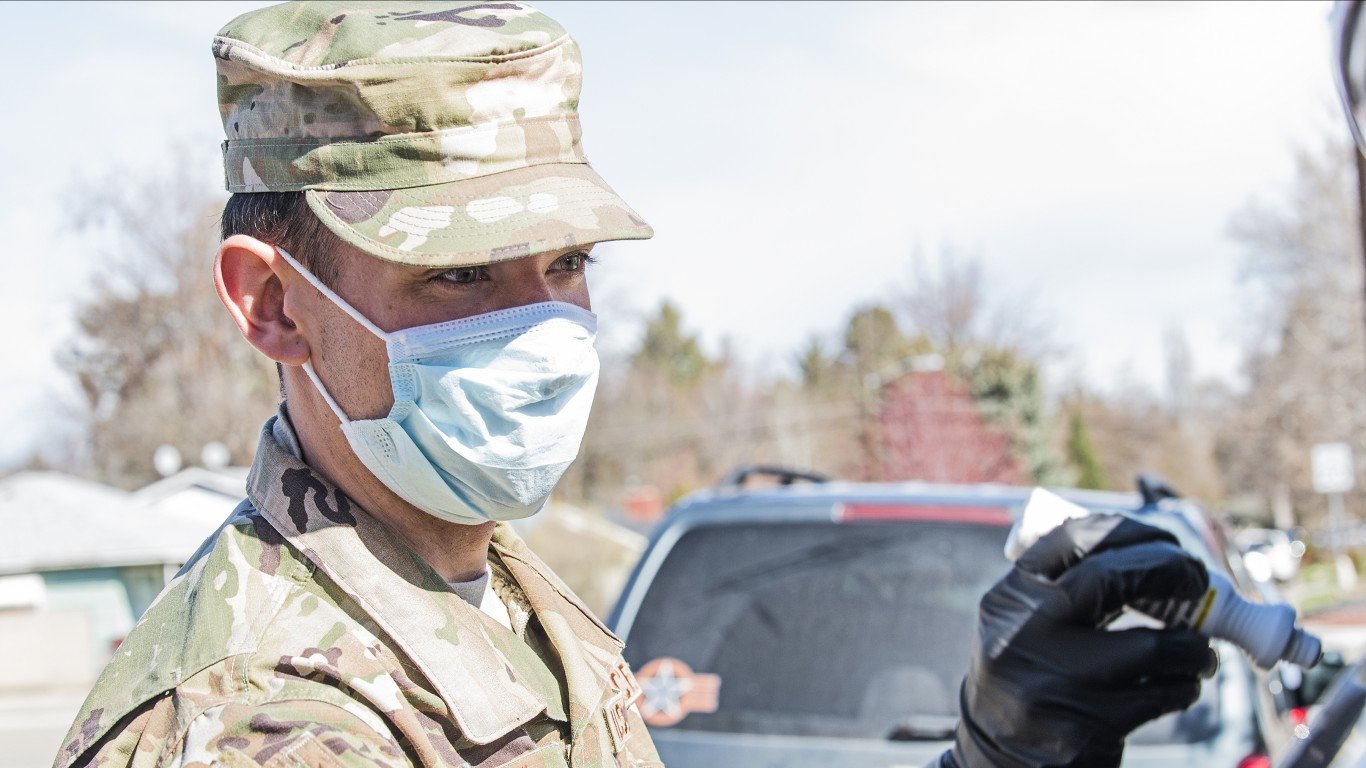
Idaho
> Cumulative COVID-19 cases as of June 18: 207 per 100,000 people — 8th lowest (total: 3,632)
> COVID-19-related deaths as of June 18: 5 per 100,000 people — 8th lowest (total: 88)
> Total tests administered as of June 18: 67,638
> Change in trailing 7-day avg. daily cases, June 10 – June 17: 11.5% — 6th smallest increase (41 to 46)
> Population: 1,754,208
Idaho is in phase 4 of reopening. As ofJune 13, gatherings of more than 50 people will be allowed where social distancing can be practiced. Nonessential travel is permitted to locations without ongoing transmission of the virus. Bars and movie theaters can reopen if they meet safety protocols, and nightclubs and large venues can open with limited standing-room capacity. Employees can return to offices if they practice social distancing. The state still encourages face mask use and maintaining 6 feet of distance from others in public.
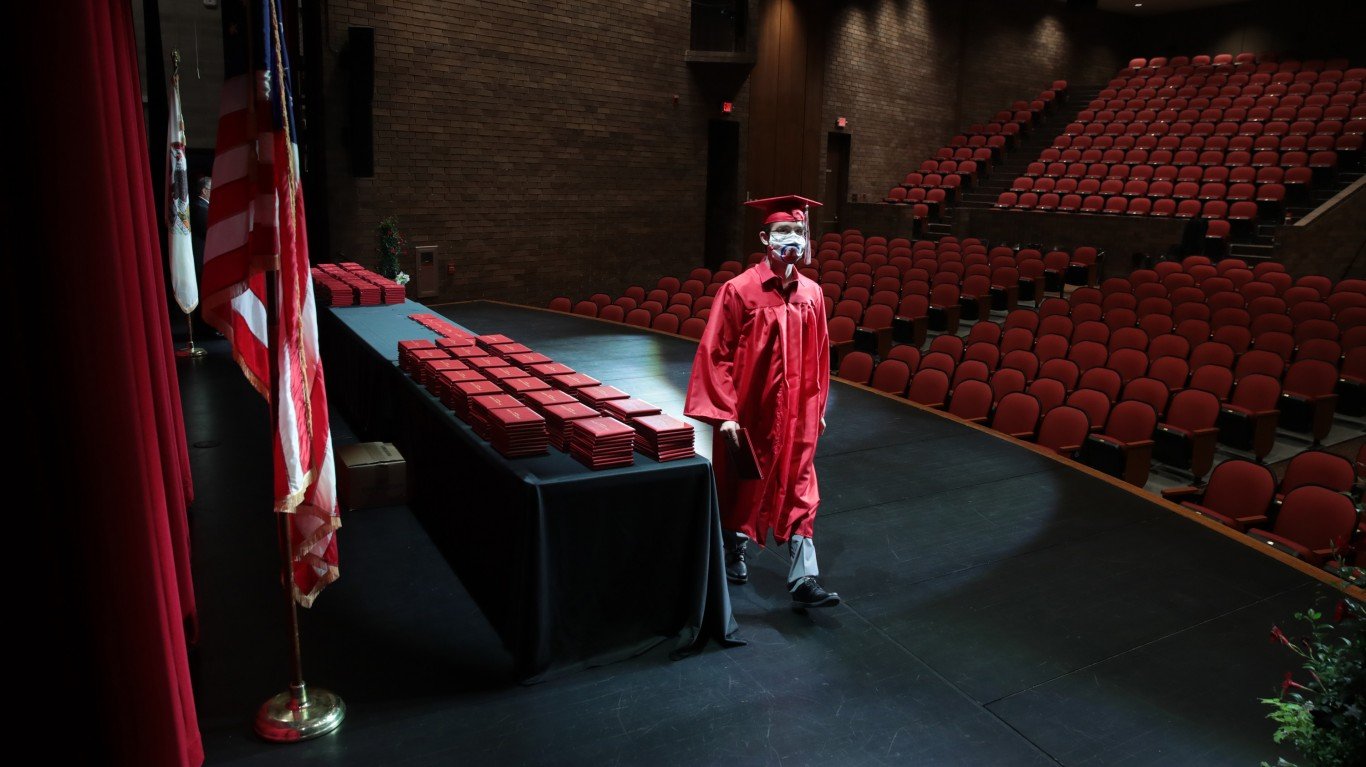
Illinois
> Cumulative COVID-19 cases as of June 18: 1,053 per 100,000 people — 7th highest (total: 134,185)
> COVID-19-related deaths as of June 18: 51 per 100,000 people — 8th highest (total: 6,485)
> Total tests administered as of June 18: 1,258,328
> Change in trailing 7-day avg. daily cases, June 10 – June 17: -27.6% — 7th largest decline (858 to 621)
> Population: 12,741,080
Restaurants began to reopen in Chicago on June 3 for outside dining only. Retail shops, salons, and barbershops were permitted to open as well, though subject to reduced capacity, and workers and customers must wear face coverings over their nose and mouth.
People must wear masks or face coverings in public places where they cannot maintain 6 feet of distance from others. Public and private schools in the state can reopen for limited in-person summer school. No more than 10 people can be present in an enclosed area, and they must be 6 feet apart. Bars and breweries in Chicago can now reopen for outdoor service only. Phase 4 of reopening is set to begin on June 26 but only in counties that meet certain criteria.

Indiana
> Cumulative COVID-19 cases as of June 18: 613 per 100,000 people — 17th highest (total: 41,013)
> COVID-19-related deaths as of June 18: 34 per 100,000 people — 12th highest (total: 2,289)
> Total tests administered as of June 18: 371,182
> Change in trailing 7-day avg. daily cases, June 10 – June 17: 1.9% — 3rd smallest increase (375 to 382)
> Population: 6,691,878
Phase 4 of reopening began on June 12. Access restrictions to state government building were lifted. Professional office building employees will be able to resume work at full capacity. Retail stores and malls can open at full capacity. Restaurants can expand indoor dining to 75% capacity. Bars, nightclubs, bar seating in restaurants, movie theaters, bowling alleys, and similar entertainment facilities can open at 50% capacity with social distancing rules in place. Recreational sports can resume with restrictions. Amusement and water parks can open at 50% capacity with restrictions. The Department of Motor Vehicles resumed walk-in services, but driving skills exams are still not available.
[in-text-ad-2]
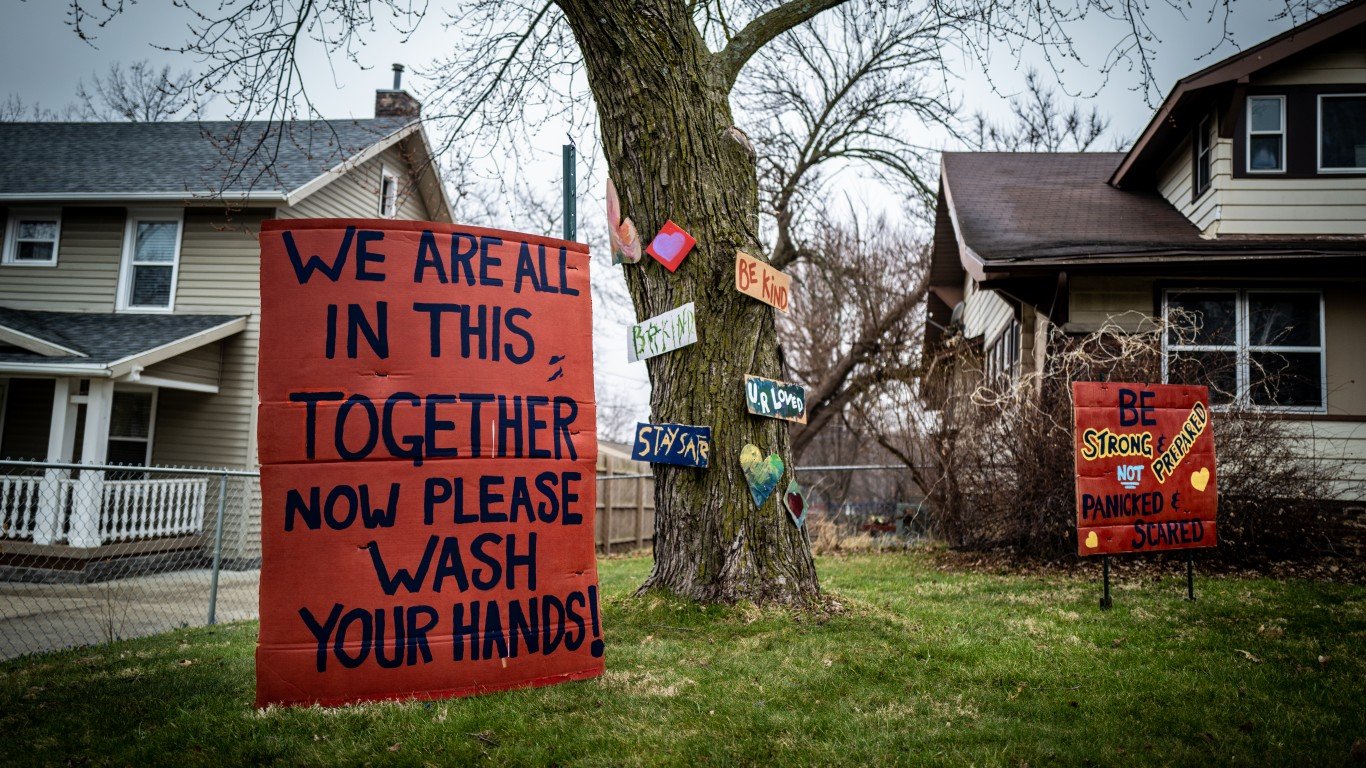
Iowa
> Cumulative COVID-19 cases as of June 18: 772 per 100,000 people — 11th highest (total: 24,379)
> COVID-19-related deaths as of June 18: 21 per 100,000 people — 20th highest (total: 671)
> Total tests administered as of June 18: 234,404
> Change in trailing 7-day avg. daily cases, June 10 – June 17: -25.7% — 9th largest decline (358 to 266)
> Population: 3,156,145
Iowa’s speedways, racetracks, and amphitheaters were allowed to reopen on June 1. Casinos were also allowed to reopen, as well as amusement parks, bowling alleys, pool halls, and arcades. Bars and other establishments that serve alcohol can reopen for indoor and outdoor seating. As of June 12, businesses, including gyms, could begin to operate at full capacity with social distancing and hygiene and public health measures. Swimming pools, indoor playgrounds, theaters and performance venues, senior citizen centers, and adult day care facilities can reopen in compliance with state guidance.
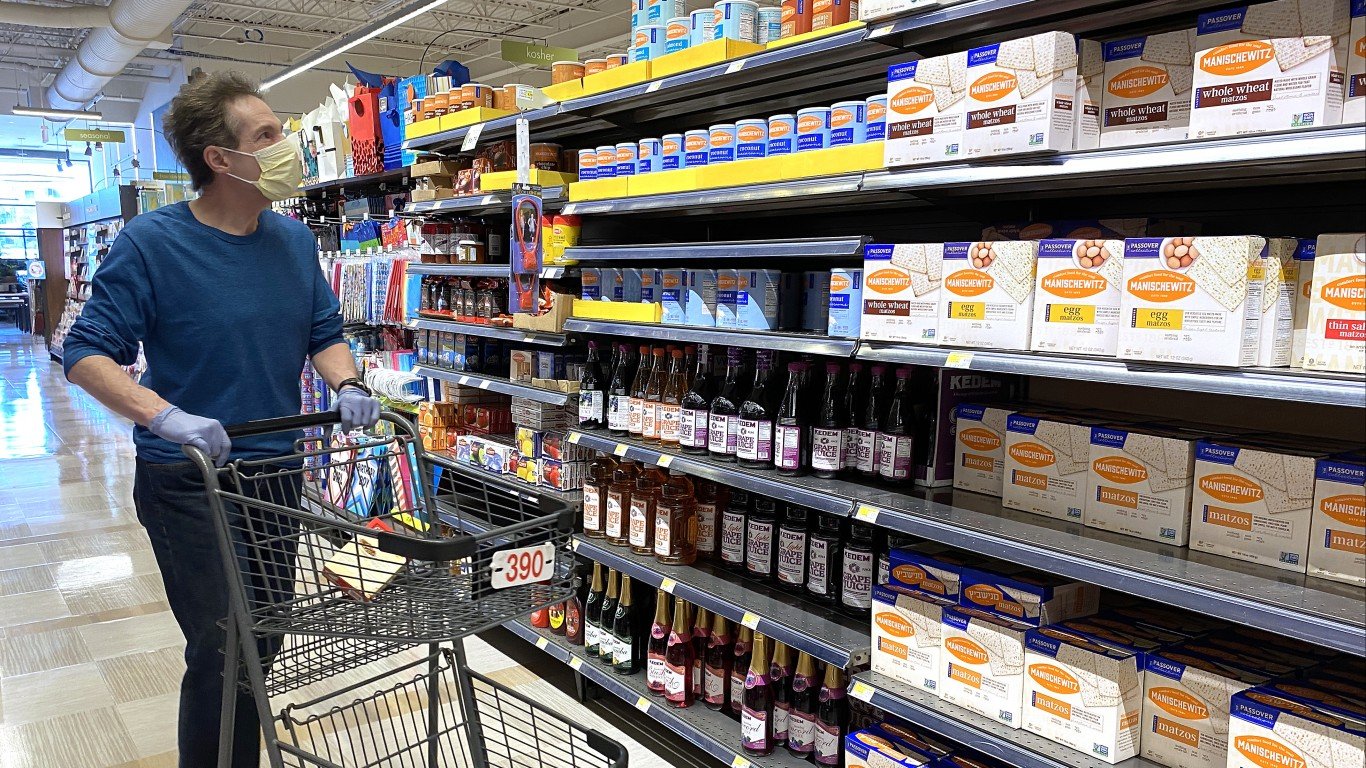
Kansas
> Cumulative COVID-19 cases as of June 18: 401 per 100,000 people — 19th lowest (total: 11,681)
> COVID-19-related deaths as of June 18: 8 per 100,000 people — 13th lowest (total: 247)
> Total tests administered as of June 18: 00
> Change in trailing 7-day avg. daily cases, June 10 – June 17: 114.8% — 4th largest increase (69 to 147)
> Population: 2,911,510
The third phase of the reopening began June 8. Social gatherings of up to 45 people are now allowed, up from 15. Bars and restaurants must preserve a 6-foot distance between tables, booths, and barstools. Casinos and indoor leisure spaces can open as well. Nonessential travel may resume. Restrictions on on-site staffing have been lifted. All education, activities, venues and establishments can operate if they follow public health guidelines. Local governments can impose stricter rules.
[in-text-ad]
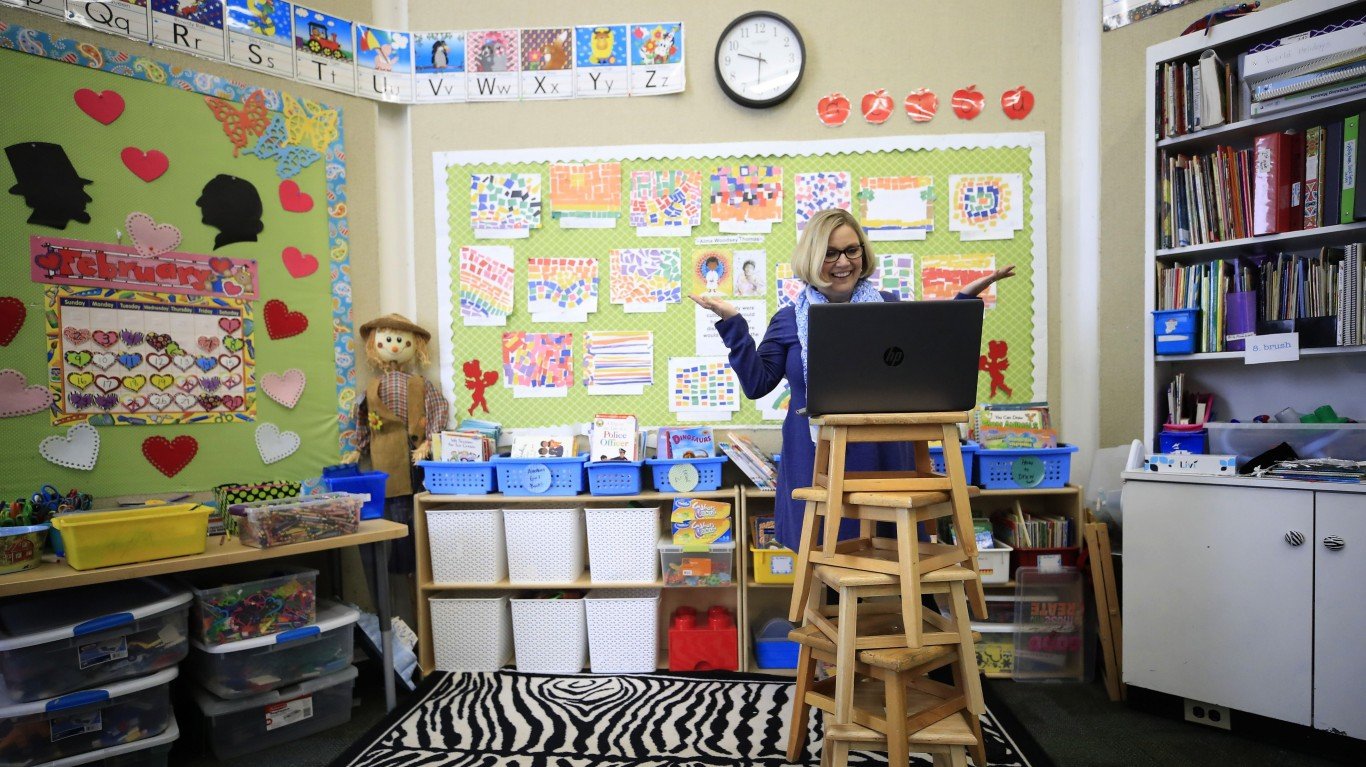
Kentucky
> Cumulative COVID-19 cases as of June 18: 291 per 100,000 people — 12th lowest (total: 12,995)
> COVID-19-related deaths as of June 18: 12 per 100,000 people — 19th lowest (total: 518)
> Total tests administered as of June 18: 299,520
> Change in trailing 7-day avg. daily cases, June 10 – June 17: -24.5% — 10th largest decline (210 to 159)
> Population: 4,468,402
Movie theaters and fitness centers were allowed to reopen on June 1, and museums, outdoor attractions, aquariums, libraries, and distilleries were allowed to reopen on June 8. Campgrounds can now reopen. Child care services can reopen as well with reduced capacity. Venues such as bars that hold 50 or fewer people and gatherings of up to 50 people can reopen starting June 29, depending on whether they meet safety criteria. Businesses that were permitted to operate at 33% capacity since May 22 will be allowed to increase capacity to 50% on June 22, provided they comply with guidelines. Restaurants can reopen with unlimited outdoor seating after June 22 as well, but they must ensure social distancing. NASCAR races will return to the Kentucky Speedway with no live audience beginning July 9.
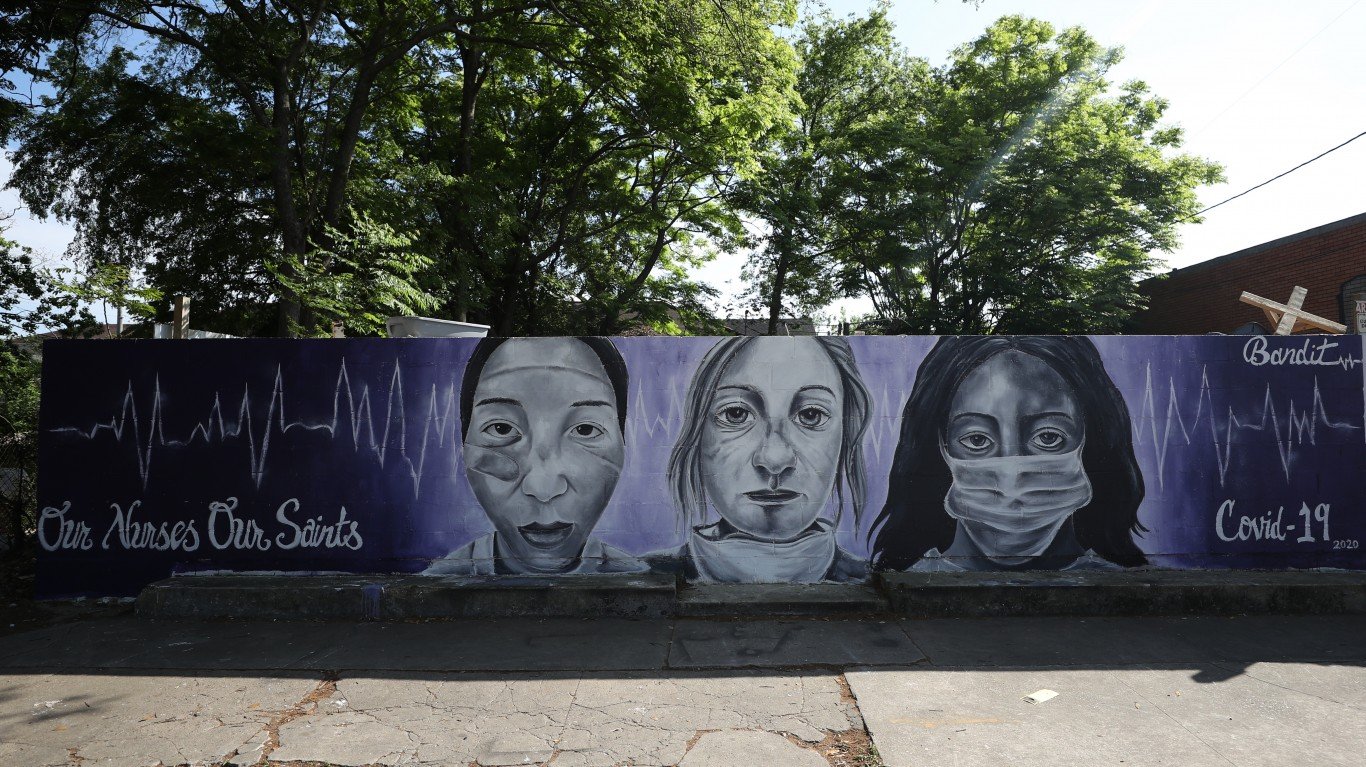
Louisiana
> Cumulative COVID-19 cases as of June 18: 1,044 per 100,000 people — 9th highest (total: 48,634)
> COVID-19-related deaths as of June 18: 63 per 100,000 people — 6th highest (total: 2,950)
> Total tests administered as of June 18: 545,221
> Change in trailing 7-day avg. daily cases, June 10 – June 17: 58.9% — 10th largest increase (414 to 658)
> Population: 4,659,978
The state entered phase 2 of reopening on June 5, and the second phase is expected to last at least three weeks. Places of worship and businesses that were already allowed to open can expand to 50% capacity with social distancing. These businesses include massage and tattoo parlors, spas, bars and breweries with food permits, bowling alleys, arcades, pool halls, casinos and video poker, trampoline parks, event centers and wedding venues, and outdoor playgrounds and play centers. Employees who work with the public must wear face coverings. Businesses are strongly encouraged to offer temperature checks to patrons. Expanded phase 2 guidelines allow bars and nightclubs to host live music.
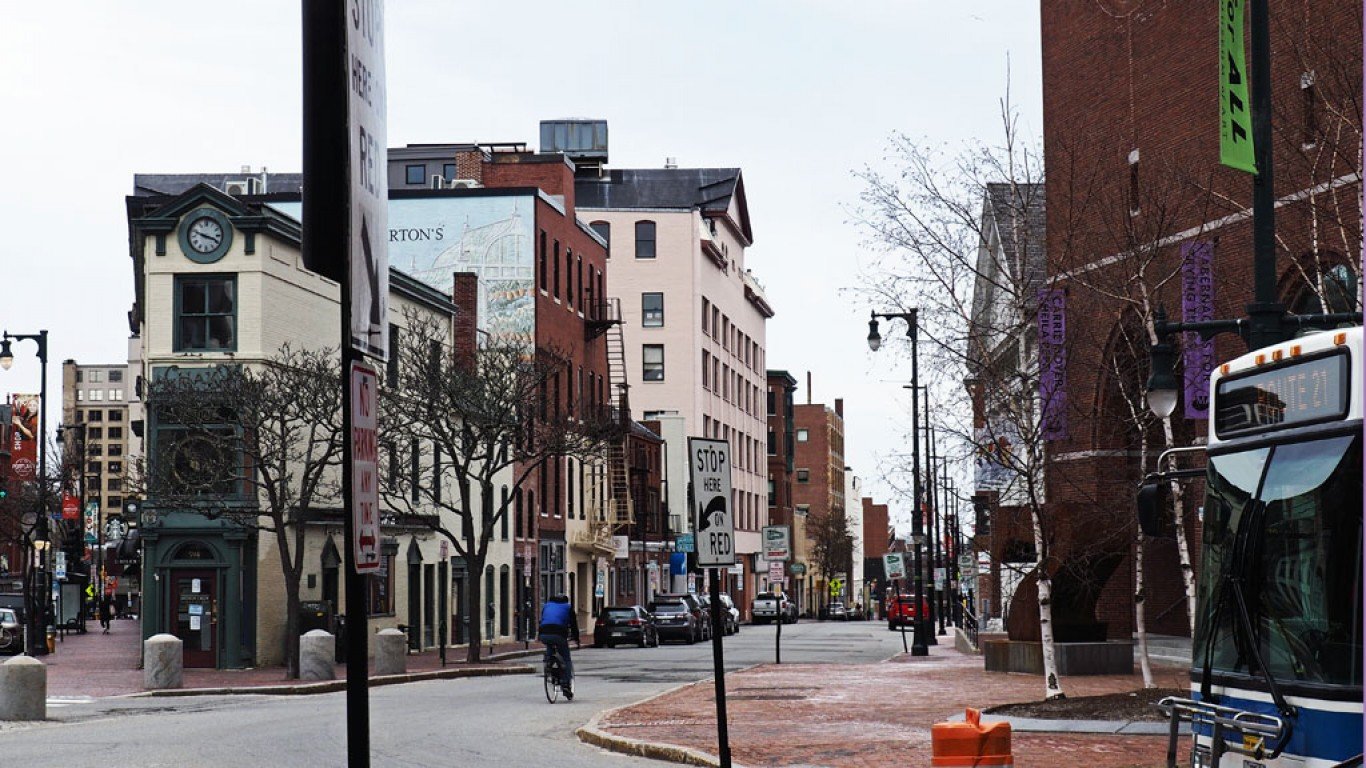
Maine
> Cumulative COVID-19 cases as of June 18: 212 per 100,000 people — 9th lowest (total: 2,836)
> COVID-19-related deaths as of June 18: 8 per 100,000 people — 12th lowest (total: 102)
> Total tests administered as of June 18: 74,763
> Change in trailing 7-day avg. daily cases, June 10 – June 17: -92.4% — the largest decline (376 to 28)
> Population: 1,338,404
As of June 17, all counties in Maine were allowed to reopen indoor dining with additional health and safety protocols. Bars, breweries, and tasting rooms can reopen for outdoor, seated service. Gyms, tattoo parlors, and nail salons can open while adhering to requirements such as wearing masks and maintaining physical distance as well. Capacity limits at retail establishments now allow up to five customers per 1,000 square feet.
Maine lodging providers began accepting reservations for stays with an arrival date of June 1 or later for Maine residents and for non-residents who comply with the state’s 14-day self-quarantine mandate. Gatherings of people were increased to 50 from 10 as of June 1.
[in-text-ad-2]
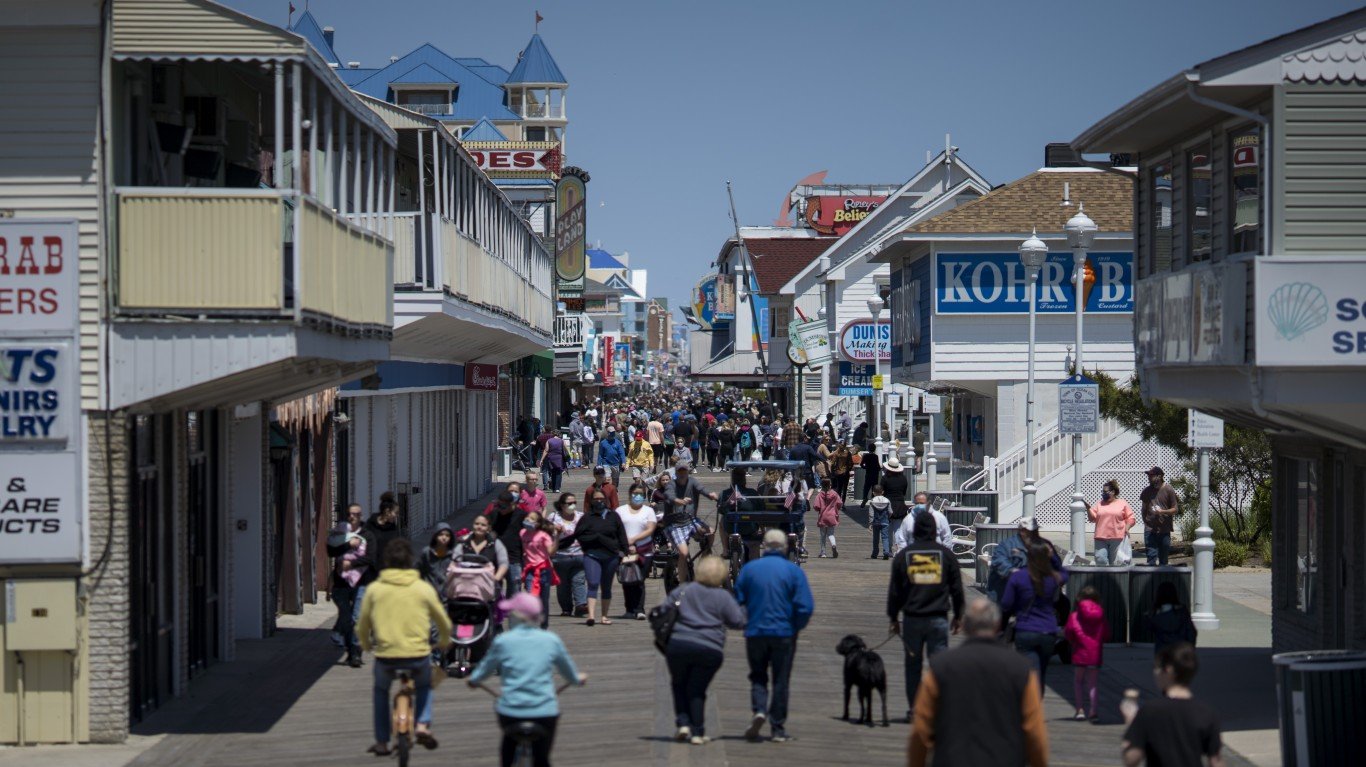
Maryland
> Cumulative COVID-19 cases as of June 18: 1,046 per 100,000 people — 8th highest (total: 63,229)
> COVID-19-related deaths as of June 18: 50 per 100,000 people — 9th highest (total: 3,016)
> Total tests administered as of June 18:
> Change in trailing 7-day avg. daily cases, June 10 – June 17: -21.8% — 11th smallest decline (640 to 501)
> Population: 6,042,718
Maryland shifted to phase 2 of its reopening plan on June 5 by lifting the order requiring the closing of nonessential businesses. The businesses include retail shops, specialty vendors, information technology companies, design studios, advertising and architectural firms, and media production companies, among others. Restaurants can open indoor dining at 50% capacity. Outdoor amusements and rides can open with restrictions. After June 19, indoor gyms, martial arts, dance, and other indoor fitness studio activities can resume activities at 50% capacity. All child care providers may start to reopen, with up to 15 people per room.
Employees able to telework are encouraged to continue to do so. Other guidance from the state for the workplace includes wearing face coverings, conducting temperature checks for workers, implementing split schedules, and staggering shifts. State government agencies started returning to normal operations on June 8.
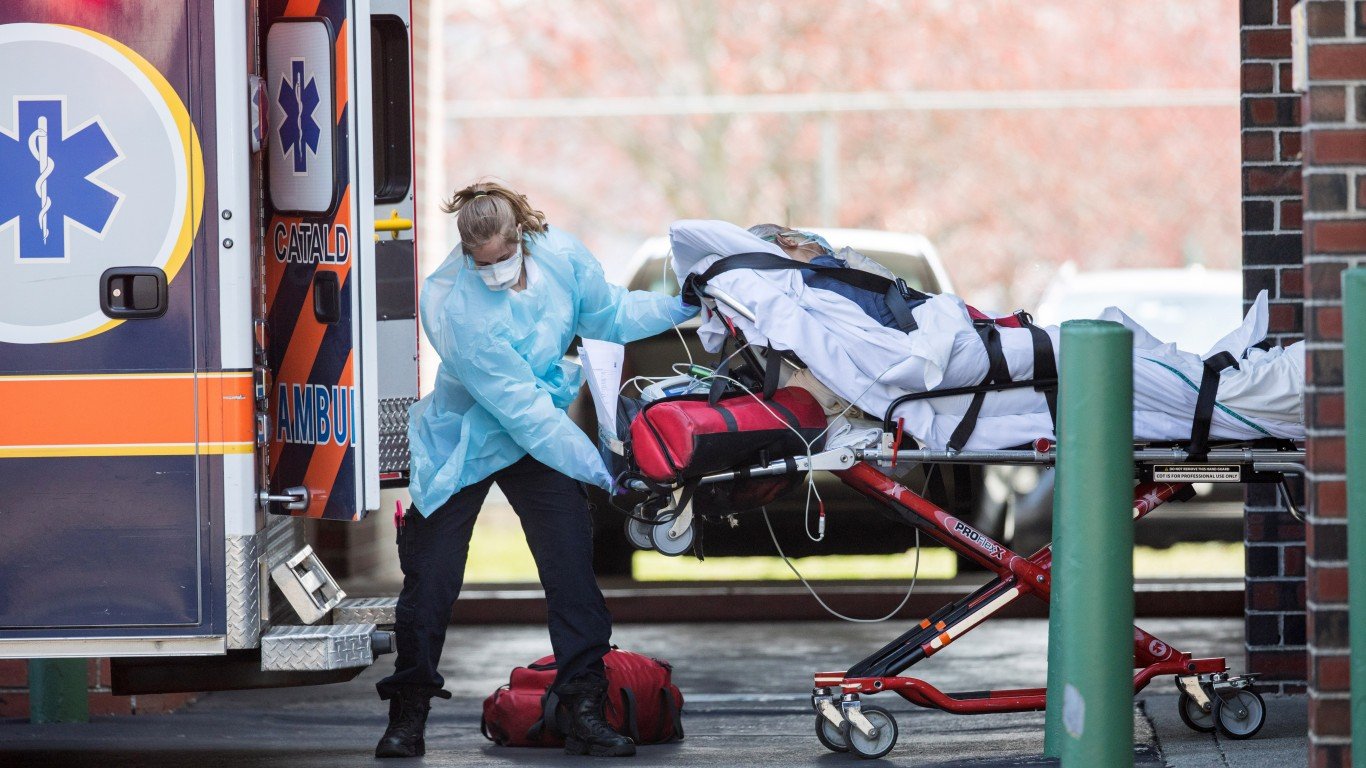
Massachusetts
> Cumulative COVID-19 cases as of June 18: 1,538 per 100,000 people — 3rd highest (total: 106,151)
> COVID-19-related deaths as of June 18: 112 per 100,000 people — 4th highest (total: 7,734)
> Total tests administered as of June 18: 727,549
> Change in trailing 7-day avg. daily cases, June 10 – June 17: -22.2% — 12th largest decline (366 to 285)
> Population: 6,902,149
The state is in phase 2 of reopening, which started on June 8. Retailers can now open in-store shopping but with capacity limits. Organized sports programs resumes for no-contact drills and practices, but participants must be separated into groups of 10 or fewer. Restaurants are allowed to provide outdoor dining service and may be allowed indoor dining depending on local health data.
Health care providers may resume in-person services, except for elective cosmetic procedures and in-person day programs. Colleges and occupational schools can resume for the purposes of completing graduation requirements.
[in-text-ad]

Michigan
> Cumulative COVID-19 cases as of June 18: 665 per 100,000 people — 14th highest (total: 66,497)
> COVID-19-related deaths as of June 18: 60 per 100,000 people — 7th highest (total: 6,036)
> Total tests administered as of June 18: 866,277
> Change in trailing 7-day avg. daily cases, June 10 – June 17: -81.6% — 2nd largest decline (1,021 to 188)
> Population: 9,995,915
Retailers were allowed to open beginning June 4 and restaurants after June 8, but with capacity limits. Swimming pools, libraries, museums, and day camps for children were allowed to open as well. Groups of up to 250 people have been allowed to gather outdoors while social distancing since June 1. Indoor gatherings are limited to 10 people. Outdoor performance and sporting venues can reopen but with a capacity of no more than 500 people. Hair salons and similar personal care businesses can resume services. Office work that cannot be performed remotely can resume, as well as in-home services such as house cleaning. Restrictions on overnight travel and troop camps have been lifted. Some school sports and other extracurricular activities can resume, but outdoors only.
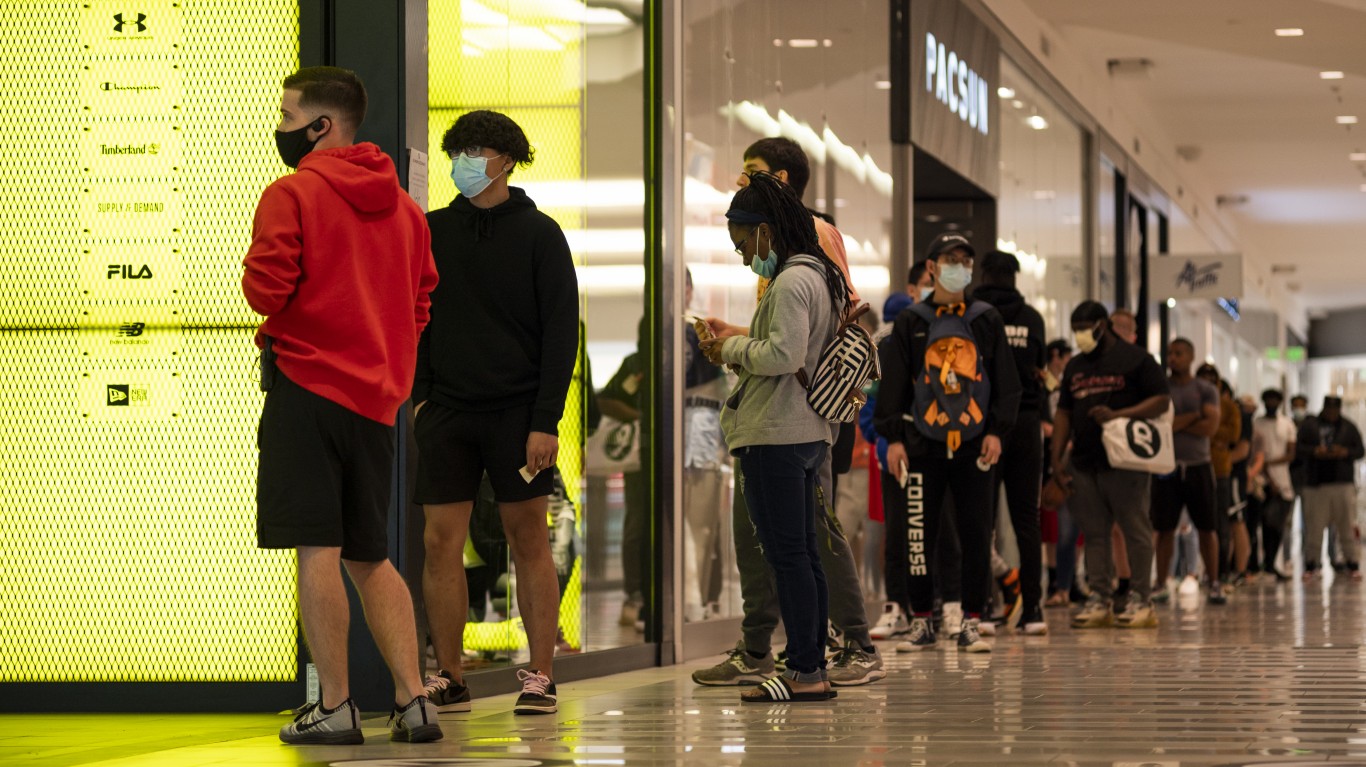
Minnesota
> Cumulative COVID-19 cases as of June 18: 558 per 100,000 people — 21st highest (total: 31,296)
> COVID-19-related deaths as of June 18: 24 per 100,000 people — 17th highest (total: 1,325)
> Total tests administered as of June 18: 448,587
> Change in trailing 7-day avg. daily cases, June 10 – June 17: -19.1% — 10th smallest decline (428 to 347)
> Population: 5,611,179
Minnesota is now in phase 3 of reopening. The plan allows for the limited reopening of indoor dining, gyms, and entertainment venues. Restaurants can open indoor dining at 50% capacity, but reservations are required. Gyms, movie theaters, and other indoor entertainment venues can open at 25% capacity. Hair salons, barbershops, and tattoo parlors can expand to 50% capacity, but clients have to make reservations. Places of worship can expand to 50% capacity. Outdoor event venues, including sporting events, concerts, and theaters, can open at 25% capacity. Indoor social gatherings are limited to 10 people. Outdoors, people can gather in groups of 25. Public swimming pools can reopen at 50% capacity if they have a COVID-19 Preparedness Plan.
Mississippi
> Cumulative COVID-19 cases as of June 18: 691 per 100,000 people — 12th highest (total: 20,641)
> COVID-19-related deaths as of June 18: 31 per 100,000 people — 13th highest (total: 938)
> Total tests administered as of June 18: 238,574
> Change in trailing 7-day avg. daily cases, June 10 – June 17: -0.1% — no change (309 to 308)
> Population: 2,986,530
Mississippi’s safer-at-home order ended June 1 and has been replaced by a safe return order, which was effective until June 15. Social gatherings must comply with social distancing requirements, with a limit of 50 people indoors and no more than 100 people outdoors. Gatherings where people cannot socially distance have limits of 20 people indoors and up to 50 people outside.
Health care procedures can return as before, but hospitals have to set aside at least 25% of capacity for COVID-19 patients. School buildings can open for summer programs. Restaurants and bars can now have live music performances, with customers and musicians maintaining at least a 12-foot distance. Indoor places of amusement such as bowling alleys and playgrounds can open at 50% capacity. Gyms and fitness centers can expand to 50% capacity. Outdoor and indoor arenas can open with limiting seating to 25% capacity.
[in-text-ad-2]
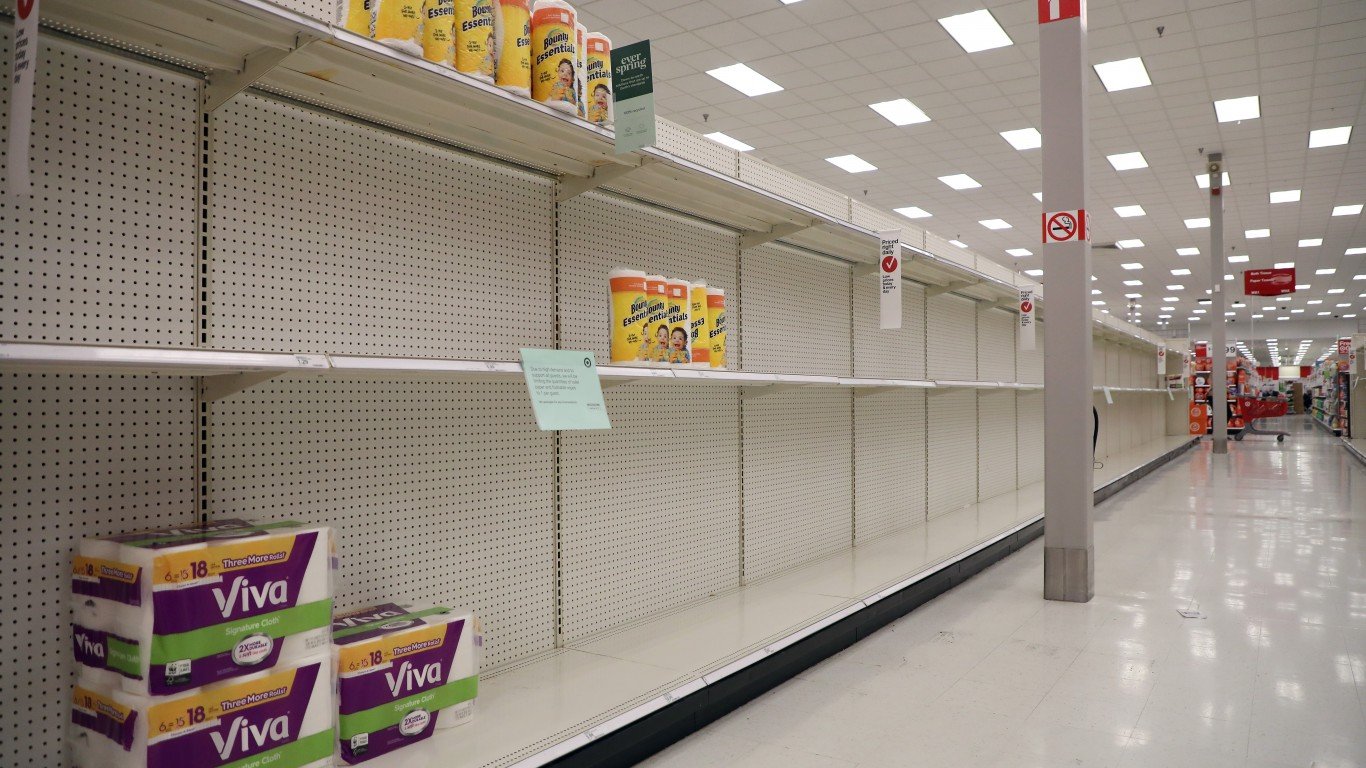
Missouri
> Cumulative COVID-19 cases as of June 18: 271 per 100,000 people — 11th lowest (total: 16,625)
> COVID-19-related deaths as of June 18: 15 per 100,000 people — 25th lowest (total: 909)
> Total tests administered as of June 18: 290,931
> Change in trailing 7-day avg. daily cases, June 10 – June 17: 1.3% — 2nd smallest increase (203 to 205)
> Population: 6,126,452
Missouri’s stay-at-home order ended May 4. Phase 2, which began June 15, allows the maximum number of people gathering in one place to increase to 50 people from 10. Also in phase 2, businesses such as restaurants, places of worship, gyms, and salons may boost operations to 50% capacity as long as social distancing is followed.
Local officials still have the authority to put further restrictions in place. Outside and window visitation at long-term care facilities, in line social distancing protocols, is now allowed.
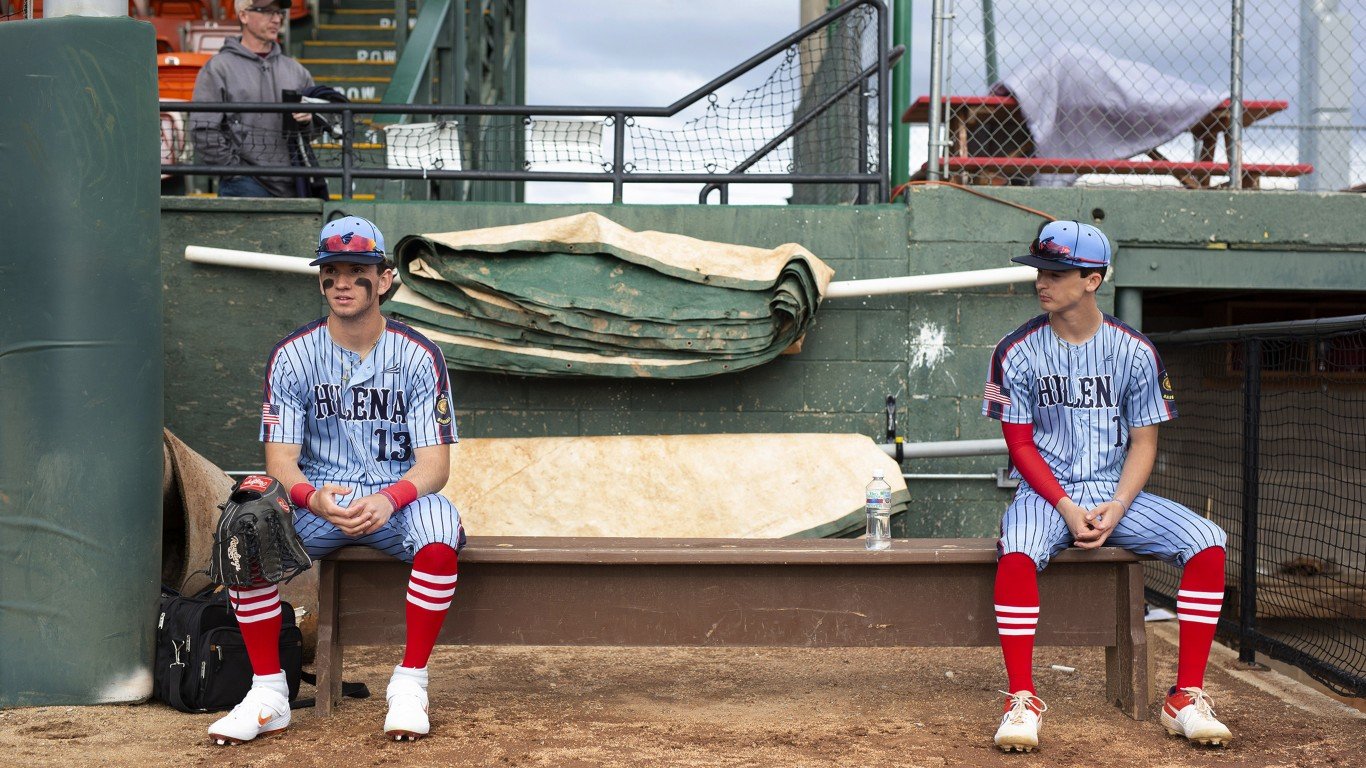
Montana
> Cumulative COVID-19 cases as of June 18: 59 per 100,000 people — 2nd lowest (total: 630)
> COVID-19-related deaths as of June 18: 2 per 100,000 people — 3rd lowest (total: 20)
> Total tests administered as of June 18: 65,515
> Change in trailing 7-day avg. daily cases, June 10 – June 17: 86.5% — 6th largest increase (5 to 10)
> Population: 1,062,305
Phase 2 of reopening started on June 1, and gatherings are now limited to a maximum of 50 people. Also beginning on June 1, restaurants, bars, breweries distilleries, and casinos were allowed to expand to 75% capacity. Gyms, indoor group fitness classes, pools, and hot tubs can also operate at 75% capacity. Concert halls, bowling alleys, and other places of assembly can resume activities but with reduced capacity. The 24-person cap per child care facility has been lifted. Employers should still allow employees to work remotely as much as possible. Glacier National Park began to reopen certain parts of the park on June 8. Areas of the west side of the park are open for day-use only.
[in-text-ad]
Nebraska
> Cumulative COVID-19 cases as of June 18: 893 per 100,000 people — 10th highest (total: 17,226)
> COVID-19-related deaths as of June 18: 12 per 100,000 people — 20th lowest (total: 234)
> Total tests administered as of June 18: 144,996
> Change in trailing 7-day avg. daily cases, June 10 – June 17: 3.6% — 5th smallest increase (166 to 172)
> Population: 1,929,268
The state never issued a stay-at-home order. People returning from international travel are required to self-quarantine for 14 days. After June 22, 89 counties will move to phase 3 of reopening, and the remaining four counties will enter phase 2. In phase 3, restaurants and bars can expand to 100% occupancy with no more than eight people per table. Games such as pool and darts will be allowed. Self-serve buffets and salad bars are still banned. Gyms, fitness centers, and health clubs can operate at 75% capacity. Personal care service businesses can operate at 75% capacity, but everyone has to wear masks. Wedding and funeral venues can allow a maximum of eight people per table and must limit dances or social events requiring guests to leave their tables.
Statewide, as of June 22, fan attendance for youth and school games will expand and will no longer be limited to household members only. Contact team sports can begin practices and play games starting July 1. Drive-in movies can resume, but people must remain inside their cars. Parades, carnivals, dances, and beer gardens are banned until at least June 30.
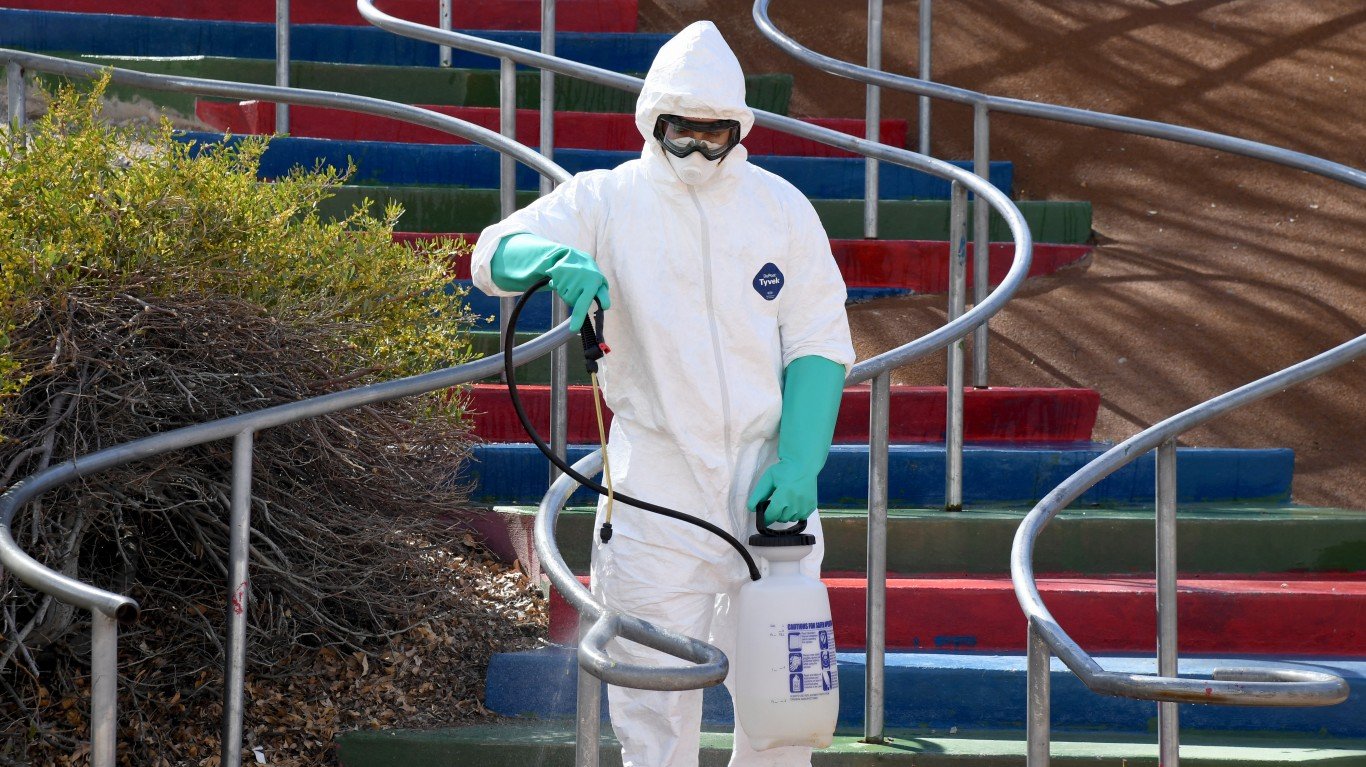
Nevada
> Cumulative COVID-19 cases as of June 18: 390 per 100,000 people — 16th lowest (total: 11,842)
> COVID-19-related deaths as of June 18: 16 per 100,000 people — 25th highest (total: 473)
> Total tests administered as of June 18: 260,801
> Change in trailing 7-day avg. daily cases, June 10 – June 17: 250.9% — the largest increase (156 to 549)
> Population: 3,034,392
The state began phase 2 of reopening on May 29, allowing salons and tattoo parlors to open. Pools, museums, zoos, malls, bowling alleys, movie theaters, and more were also allowed to reopen with reduced capacity.
Nevada’s lifeblood, the gaming industry, reopened on June 4. Live events such as sports, concerts, and theater performances may be held for broadcast, with no in-person spectators allowed.
Schools will reopen for summer classes and activities. Districts and schools may choose to offer summer instruction online, in-person classes, or both. All DMV offices reopened for in-person services after June 15.
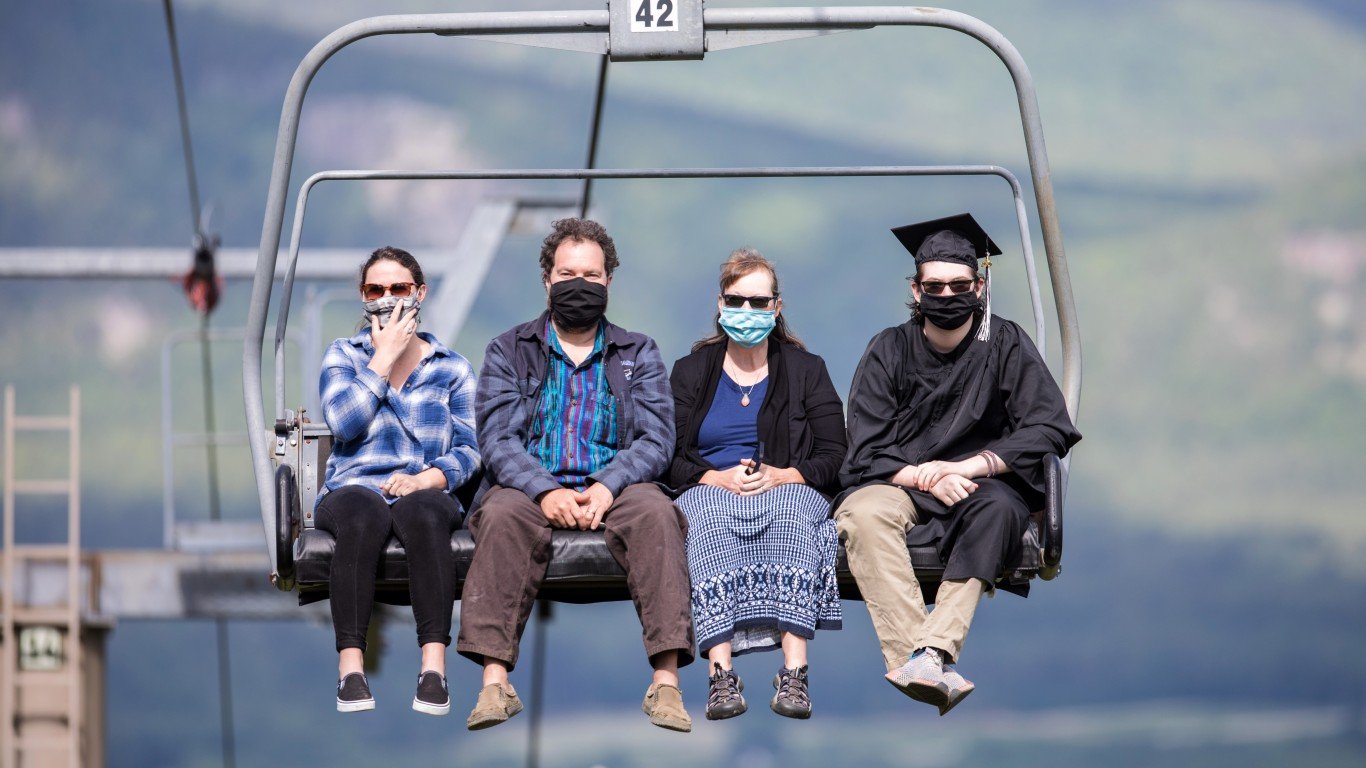
New Hampshire
> Cumulative COVID-19 cases as of June 18: 401 per 100,000 people — 18th lowest (total: 5,436)
> COVID-19-related deaths as of June 18: 24 per 100,000 people — 16th highest (total: 330)
> Total tests administered as of June 18: 101,984
> Change in trailing 7-day avg. daily cases, June 10 – June 17: -36.6% — 5th largest decline (58 to 37)
> Population: 1,356,458
An amended stay-at-home order expired on May 31. Still, people must maintain at least 6 feet distance when outside, use proper hand hygiene, and wear a mask whenever possible. Services like salons, massage therapy centers, and tattoo shops were allowed to reopen. Hotels and short-term rentals were allowed to resume service for state residents.
Beach activities are now allowed at state seacoast beaches. As of June 15, gyms can open at 50% capacity, and amateur sports can move into phase 2. Indoor athletic facilities and road races can reopen. Bowling alleys, libraries, funeral homes, museums, art galleries and pools can also open. Outdoor attractions such as tourist trains can resume. Day camps can open after June 22. Overnight summer camps can open a week after that. Indoor movie theaters, performing arts centers, and amusement parks can all open with capacity limits after June 29.
[in-text-ad-2]
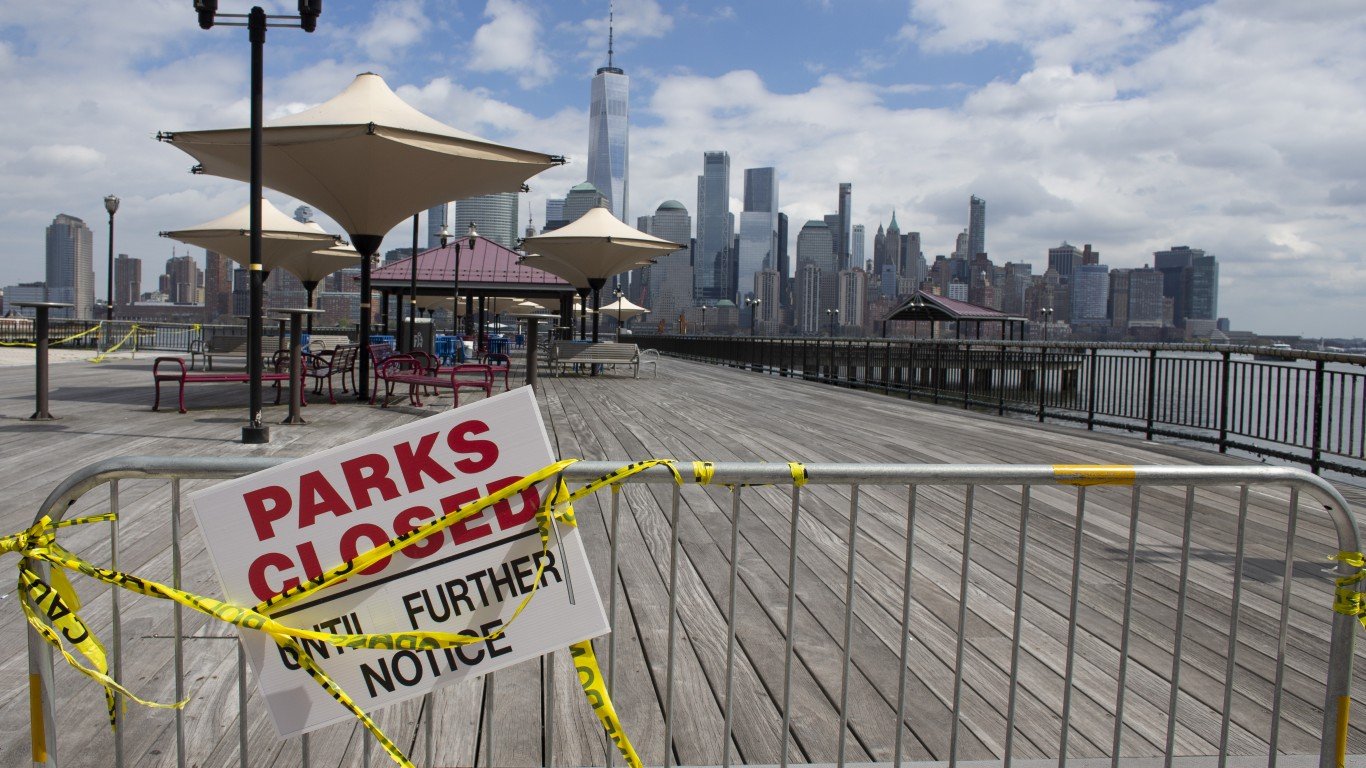
New Jersey
> Cumulative COVID-19 cases as of June 18: 1,883 per 100,000 people — 2nd highest (total: 167,703)
> COVID-19-related deaths as of June 18: 143 per 100,000 people — the highest (total: 12,769)
> Total tests administered as of June 18: 1,147,841
> Change in trailing 7-day avg. daily cases, June 10 – June 17: -28.1% — 6th largest decline (468 to 337)
> Population: 8,908,520
New Jersey’s stay-at-home order was lifted on June 9. Under current rules, public parks have reopened, as well as beaches and curbside retail. Phase 2 of reopening will begin on June 15. People who can work from home should continue to do so. Museums, libraries, limited in-person government services, and gyms will be allowed to reopen. Outdoor dining and limited in-person retail can resume after June 15 as well. Hair salons and barbershops will be allowed to reopen after June 22. Nonessential retail stores can open after June 15 at 50% capacity.
Outdoor organized sports that involve no or little contact can resume on June 22. Traditional practices and competitions may be allowed after July 6 for medium-risk sports and after July 20 for high-risk sports. The limit on outdoor gatherings may be raised to 250 people on June 22 and 500 people on July 3. Graduations can be held after July 6 and have a 500-person limit. People can gather outside in groups of 100.

New Mexico
> Cumulative COVID-19 cases as of June 18: 480 per 100,000 people — 24th highest (total: 10,065)
> COVID-19-related deaths as of June 18: 22 per 100,000 people — 19th highest (total: 452)
> Total tests administered as of June 18: 275,897
> Change in trailing 7-day avg. daily cases, June 10 – June 17: -26.6% — 8th largest decline (159 to 116)
> Population: 2,095,428
A modified stay-at-home order expired on May 31. Some nonessential businesses and services, including retailers, are now allowed to reopen at 25% capacity. Gatherings of more than five people are not allowed. Restaurants are now allowed to resume indoor seating at 50% capacity. They can in most of the state now offer limited outdoor dine-in service. Tables must be at least 6 feet apart, and each table can have no more than six customers. Gyms can also reopen and operate at 50% capacity. Malls, barbershops, and tattoo parlors can open at 25% capacity. Many state parks are now open for day use.
Breweries can now offer outdoor and patio seating at 50% capacity, in line with social distancing protocols. Indoor service is allowed at 50% capacity, but bar and counter seating is still banned. Establishments can record customers’ names, contact information, and date and time of their visit for potential contact tracing purposes.
[in-text-ad]
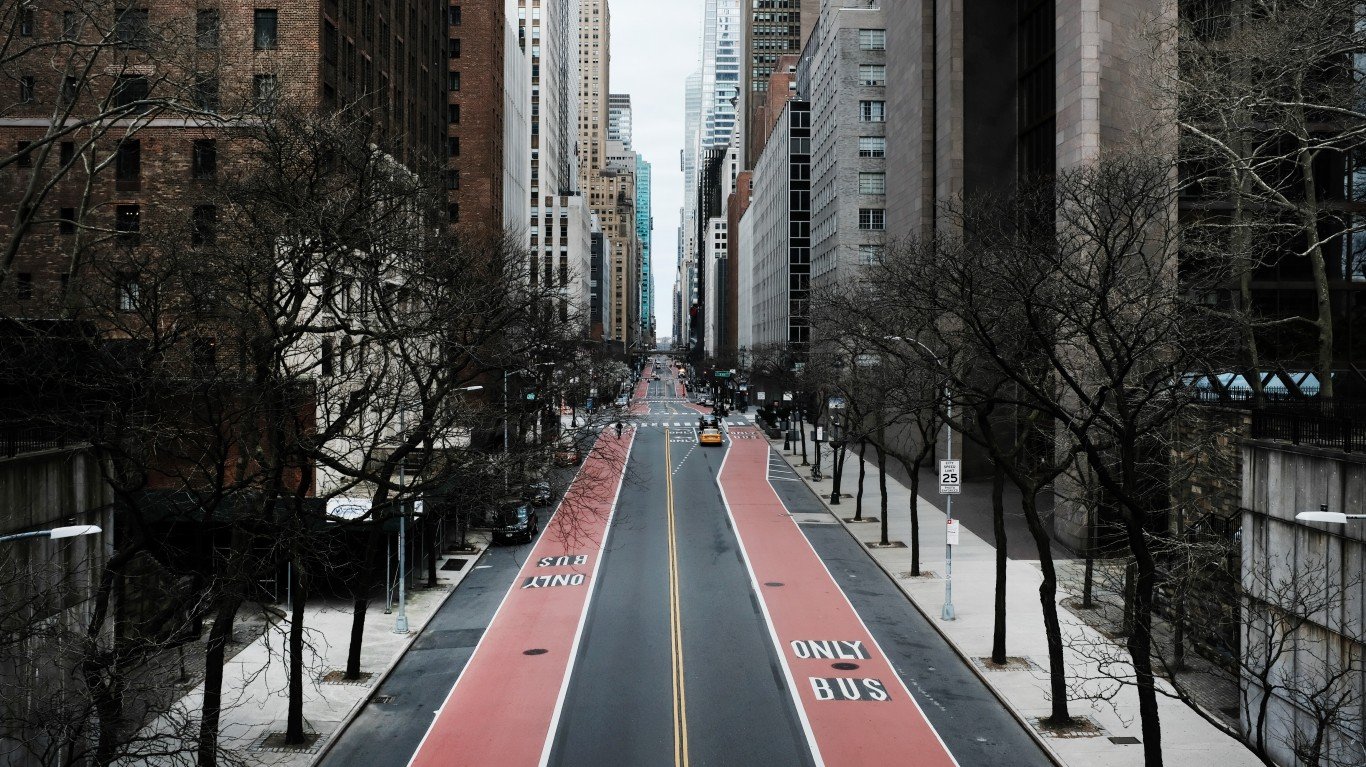
New York
> Cumulative COVID-19 cases as of June 18: 1,971 per 100,000 people — the highest (total: 385,142)
> COVID-19-related deaths as of June 18: 126 per 100,000 people — 2nd highest (total: 24,629)
> Total tests administered as of June 18: 3,111,119
> Change in trailing 7-day avg. daily cases, June 10 – June 17: -17.9% — 8th smallest decline (867 to 712)
> Population: 19,542,209
Though limited reopenings began in certain regions on May 15, the statewide stay-at-home order expired on May 28 with social distancing rules remaining in place. Businesses can deny entry to people without masks. Campgrounds and RV parks are now allowed to reopen statewide. In-person special education instruction can take place over the summer. Schools can hold drive-in and drive-through graduation ceremonies.
Five regions have already entered phase 3 — Central New York, the Finger Lakes, the Mohawk Valley, the North Country, the Southern Tier. There, gatherings of up to 25 people, an increase from 10, is allowed in phase 3.
New York City is on track to enter phase 2 on June 22. The U.S. Open will take place in Queens from Aug. 31 to Sept. 13 — the usual time every year — without a live audience.
North Carolina
> Cumulative COVID-19 cases as of June 18: 451 per 100,000 people — 24th lowest (total: 46,855)
> COVID-19-related deaths as of June 18: 11 per 100,000 people — 18th lowest (total: 1,168)
> Total tests administered as of June 18: 667,422
> Change in trailing 7-day avg. daily cases, June 10 – June 17: 17.4% — 9th smallest increase (1,056 to 1,241)
> Population: 10,383,620
North Carolina entered its first phase of reopening on May 8, allowing retailers to operate at 50% capacity and child care centers to reopen. The modified stay-at-home order expired on May 22, when the state entered phase 2. Under the new rules, gatherings of up to 10 people indoors and 25 people outdoors are allowed. The state also advises residents to maintain at least 6 feet of distance from others in public and wear a face mask. Restaurants are now open but must operate at 50% capacity and follow strict sanitation and social distancing guidelines. Currently, phase 2 is set to expire on June 26.
North Dakota
> Cumulative COVID-19 cases as of June 18: 417 per 100,000 people — 23rd lowest (total: 3,166)
> COVID-19-related deaths as of June 18: 10 per 100,000 people — 17th lowest (total: 74)
> Total tests administered as of June 18: 89,674
> Change in trailing 7-day avg. daily cases, June 10 – June 17: -14.1% — 5th smallest decline (37 to 32)
> Population: 760,077
North Dakota is one of a handful of states that never issued a statewide stay-at-home order. The order for all nonessential businesses to close ended on April 30. Some businesses, including movie theaters, gyms, salons, tattoo parlors, bars, and restaurants have been allowed to open. Bars and restaurants are now allowed to increase capacity to 75%; movie theaters are allowed to increase capacity to 65%; and fitness centers may consider resuming classes with social distancing. The recommended capacity for banquets and weddings increased to 75% of venue occupancy, but to no more than 500 people.
[in-text-ad-2]
Ohio
> Cumulative COVID-19 cases as of June 18: 363 per 100,000 people — 15th lowest (total: 42,422)
> COVID-19-related deaths as of June 18: 22 per 100,000 people — 18th highest (total: 2,611)
> Total tests administered as of June 18:
> Change in trailing 7-day avg. daily cases, June 10 – June 17: 2.3% — 4th smallest increase (398 to 407)
> Population: 11,689,442
The modified stay-at-home order expired on May 29. People are required to wear face coverings when in public. Social gatherings remain limited to a maximum of 10 people.
Gyms and fitness centers are able to reopen and non-contact and limited-contact sports can resume with safety protocols in place. Public and club pools can reopen as can miniature golf, batting cages, and bowling alleys. Catering and banquet centers can reopen if tables are at least 6 feet apart and gatherings don’t exceed 300 people. Child care facilities were allowed to reopen May 31, as long as they follow safety guidelines.
Entertainment facilities such as country clubs, indoor movie theaters, outdoor playgrounds, trampoline parks, and zoos can now also open. Casinos, amusement parks, and water parks can open beginning June 19.
Oklahoma
> Cumulative COVID-19 cases as of June 18: 226 per 100,000 people — 10th lowest (total: 8,904)
> COVID-19-related deaths as of June 18: 9 per 100,000 people — 16th lowest (total: 364)
> Total tests administered as of June 18:
> Change in trailing 7-day avg. daily cases, June 10 – June 17: 111.0% — 5th largest increase (96 to 203)
> Population: 3,943,079
The state never issued a statewide stay-at-home order except for older people and those who have certain preexisting conditions. Restrictions on salons, barbers, and pet groomers have been lifted. Restaurant dining, movie theaters, gyms, houses of worship, and sporting venues have been allowed to reopen since May 1 with certain restrictions, including adhering to strict social distancing and sanitation protocols.
Phase 3 of reopening started on June 1. Businesses can now resume staffing at their work sites, but social distancing guidelines must be followed. Businesses that were operating by appointment only can now start accepting walk-ins. Summer camps can open in line with safety guidelines. Limited visitation to hospitals may resume. Visitation at nursing homes and long-term care facilities can now resume in a phased approach.
[in-text-ad]
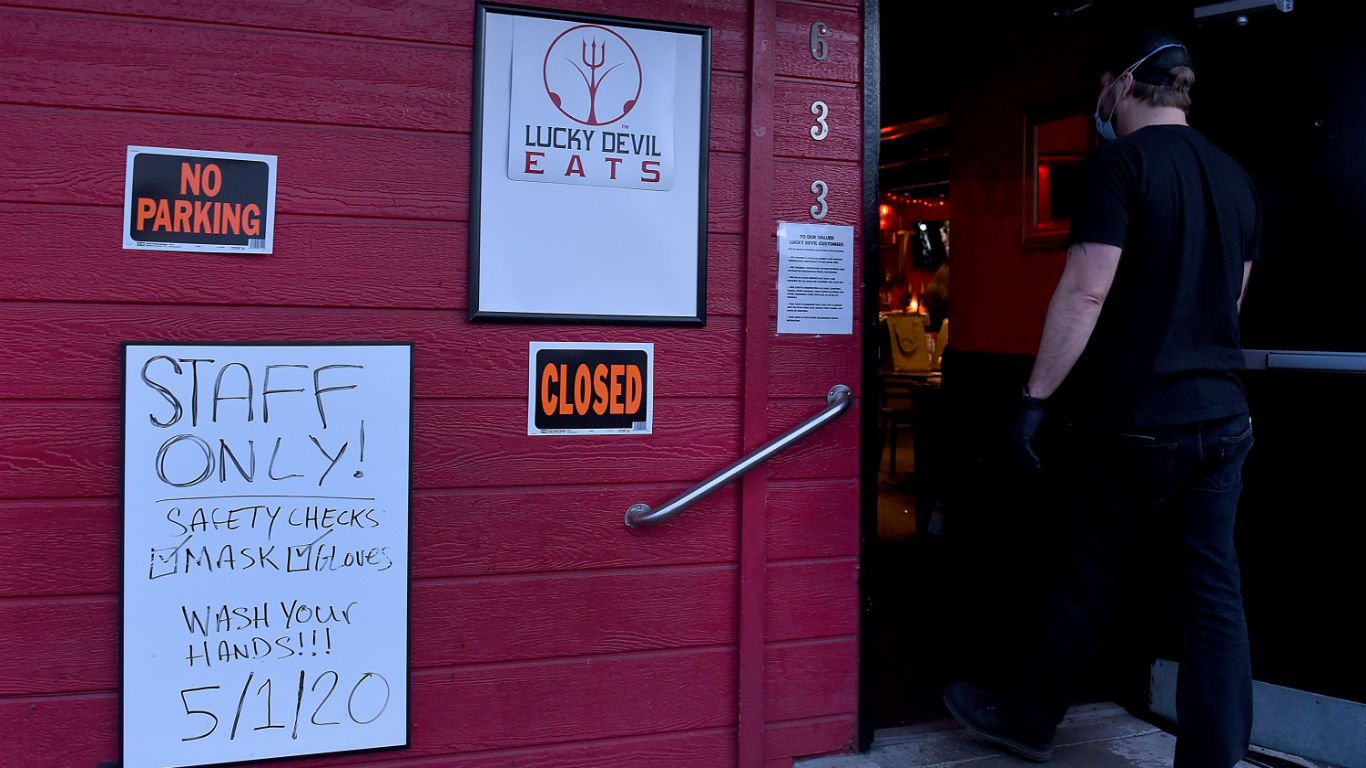
Oregon
> Cumulative COVID-19 cases as of June 18: 148 per 100,000 people — 5th lowest (total: 6,218)
> COVID-19-related deaths as of June 18: 4 per 100,000 people — 5th lowest (total: 183)
> Total tests administered as of June 18: 184,139
> Change in trailing 7-day avg. daily cases, June 10 – June 17: 123.6% — 2nd largest increase (104 to 232)
> Population: 4,190,713
A stay-at-home order is in effect until further notice. Counties can begin lifting some restrictions when they meet certain requirements and must stay in phase 1 of the reopening for at least three weeks. Some counties began phase 2. As of June 12, there are 29 counties in phase 2 and six counties in phase 1. In phase 2, gatherings are limited to 50 people indoors and 100 people outdoors, and restaurants and bars can extend their curfews to midnight. Movie theaters and large venues can expand their occupancy to up to 250 people. Employees may begin a limited return to indoor workplaces. However, working from home is still recommended.
Statewide, zoos, gardens and museums can now open in a limited manner, and professional and collegiate sports teams can resume training with added safety precautions.
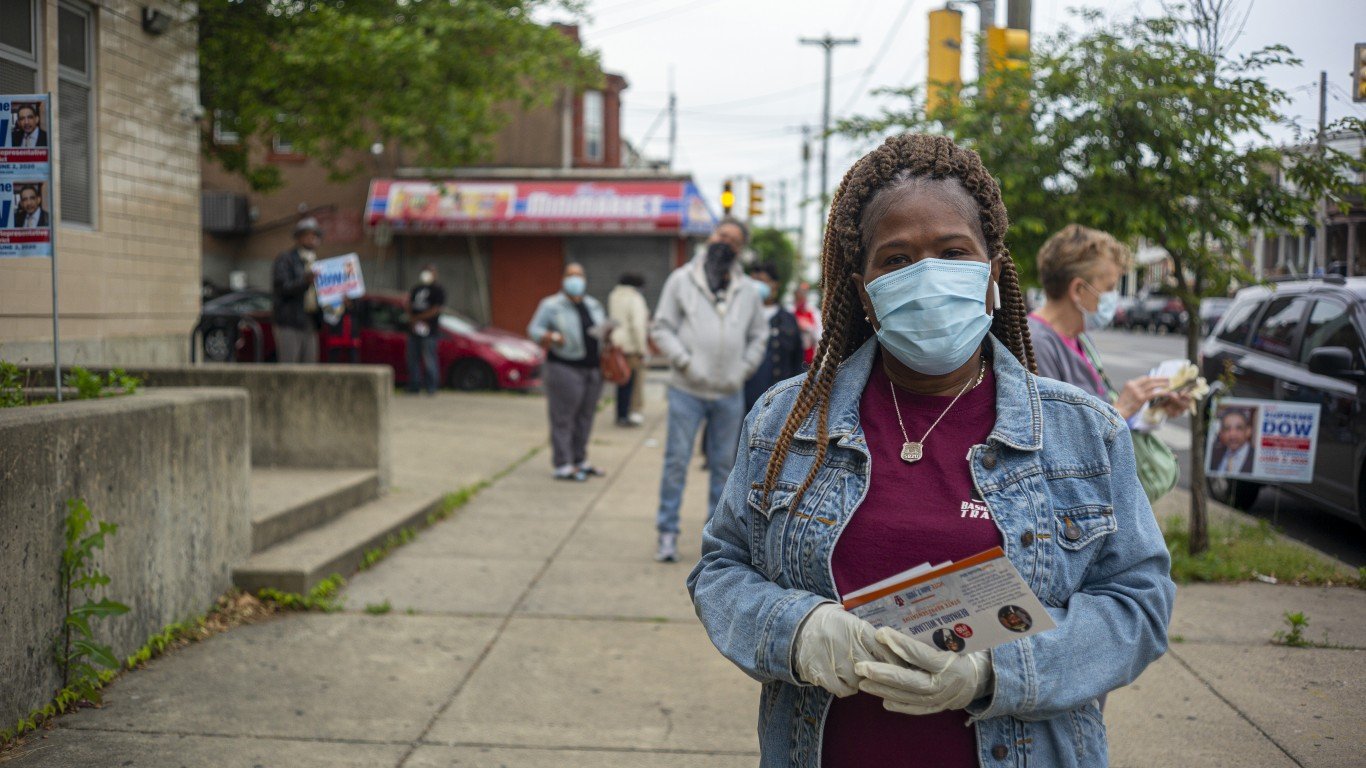
Pennsylvania
> Cumulative COVID-19 cases as of June 18: 623 per 100,000 people — 16th highest (total: 79,818)
> COVID-19-related deaths as of June 18: 49 per 100,000 people — 10th highest (total: 6,319)
> Total tests administered as of June 18:
> Change in trailing 7-day avg. daily cases, June 10 – June 17: -13.6% — 4th smallest decline (492 to 425)
> Population: 12,807,060
The stay-at-home order expired on June 4 for all counties, though some less-affected areas in the state reopened on May 29. Social distancing and wearing masks are required when outdoors. Working remotely is strongly encouraged, and large recreational gatherings are limited to a maximum of 250 people. Businesses can now offer outdoor activities such as mountain biking, miniature golf, motor sports, rock climbing, and tennis, provided they implement safety and social distancing protocols.
Some counties now allow outdoor dining. Professional sports teams can practice and play without fans in certain counties if they have developed a COVID-19 safety plan. All state park beaches are open. State park pools are now open but at 50% capacity.
Rhode Island
> Cumulative COVID-19 cases as of June 18: 1,533 per 100,000 people — 4th highest (total: 16,213)
> COVID-19-related deaths as of June 18: 83 per 100,000 people — 5th highest (total: 876)
> Total tests administered as of June 18: 206,470
> Change in trailing 7-day avg. daily cases, June 10 – June 17: -14.9% — 6th smallest decline (77 to 65)
> Population: 1,057,315
The stay-at-home order expired on May 8. The state entered phase 2 of its reopening plan on June 1. People are required to wear masks indoors as well as outdoors if they can’t maintain 6 feet of distance. Social gatherings of no more than 15 people are allowed. Offices can open but to no more than 33% capacity. Working from home, though, is still encouraged. State park and beaches are now open, but capacity is limited.
Malls, hair salons, barbershops, and other businesses that offer personal services can reopen with restrictions. Gyms, fitness studios, and small group fitness classes are allowed to reopen but with limited capacity. Child care services can now reopen but in small groups. Summer camps and other youth summer programs will begin after June 29.
[in-text-ad-2]
South Carolina
> Cumulative COVID-19 cases as of June 18: 404 per 100,000 people — 22nd lowest (total: 20,551)
> COVID-19-related deaths as of June 18: 12 per 100,000 people — 21st lowest (total: 617)
> Total tests administered as of June 18:
> Change in trailing 7-day avg. daily cases, June 10 – June 17: 54.2% — 11th largest increase (444 to 685)
> Population: 5,084,127
The stay-at-home order expired on May 4. Orders for out-of-state visitors to quarantine have also expired. Though the state of emergency order was extended, occupancy limits on retail businesses have been lifted. Bowling alleys are now open, but customers should bring their own bowling balls and shoes if possible. Traveling restrictions on visitors from high-risk areas have been lifted as well.
Residents are encouraged, but are no longer required by law, to work from home. Restaurants can choose to reopen for limited dine-in services if they follow state guidelines. Outdoor customer dining services are also allowed. Youth and adult sports leagues started practicing on May 30, and competitions are now permitted. Day camps can operate provided they comply with health and safety guidelines such as campers following physical distancing per groups.
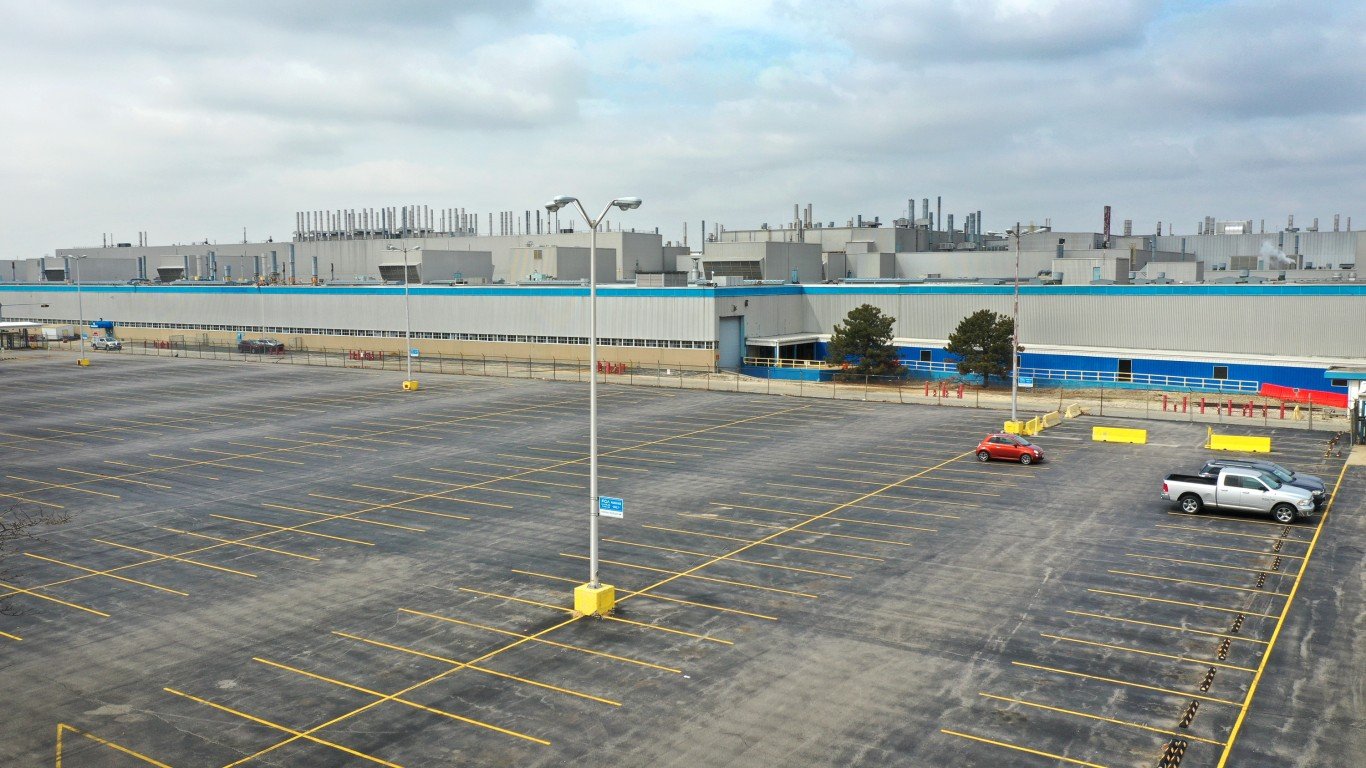
South Dakota
> Cumulative COVID-19 cases as of June 18: 686 per 100,000 people — 13th highest (total: 6,050)
> COVID-19-related deaths as of June 18: 9 per 100,000 people — 14th lowest (total: 78)
> Total tests administered as of June 18: 68,988
> Change in trailing 7-day avg. daily cases, June 10 – June 17: 0.9% — the smallest increase (63 to 64)
> Population: 882,235
The state never issued a statewide stay-at-home order, but it did institute some restrictions on gatherings and businesses. An order that required state residents to observe social distancing and CDC-recommended hygiene practices expired on May 31, but the state of emergency has been extended until December 30.
Businesses are now allowed to reopen if the surrounding area has reported a downward trend in cases for two weeks. Employees can now be called back to the office, though administrative leave is allowed for those who cannot come in and cannot work remotely.
[in-text-ad]

Tennessee
> Cumulative COVID-19 cases as of June 18: 475 per 100,000 people — 25th highest (total: 32,143)
> COVID-19-related deaths as of June 18: 7 per 100,000 people — 11th lowest (total: 497)
> Total tests administered as of June 18: 644,344
> Change in trailing 7-day avg. daily cases, June 10 – June 17: 40.3% — 13th smallest increase (435 to 611)
> Population: 6,770,010
The stay-at-home order expired on April 30. A safer-at-home order was in effect until May 29. Many businesses have been allowed to open in the meanwhile. Restaurants can offer in-person but limited-capacity dining. Noncontact sports, like baseball, golf, or tennis, were allowed to resume on May 22, as was higher education.
Groups of up to 50 people can now participate in social and recreational gatherings if they practice social distancing. Nursing homes and long-term care facilities reopened for visitors on June 15. The most populated areas of the state will decide when to reopen on their own.
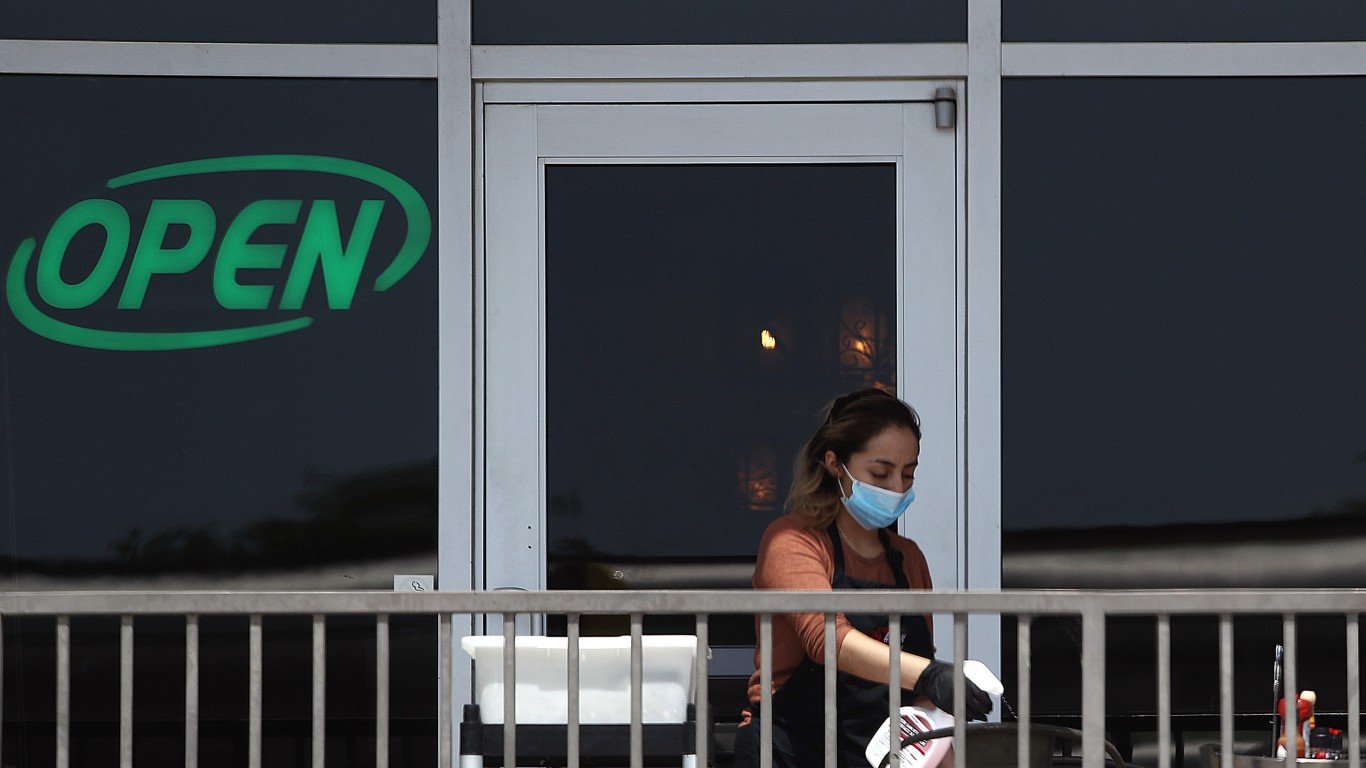
Texas
> Cumulative COVID-19 cases as of June 18: 336 per 100,000 people — 13th lowest (total: 96,335)
> COVID-19-related deaths as of June 18: 7 per 100,000 people — 10th lowest (total: 2,062)
> Total tests administered as of June 18: 1,369,638
> Change in trailing 7-day avg. daily cases, June 10 – June 17: 25.7% — 11th smallest increase (1,884 to 2,368)
> Population: 28,701,845
The stay-at-home order expired on April 30. All air travel restrictions, including mandatory quarantines for out-of-state travelers, have been lifted. Zoos and water parks are allowed to reopen with limited capacity. Amusement parks and carnivals in counties with more than 1,000 confirmed positive cases can open at 50% capacity after June 19.
The state is now in phase 3 of reopening. Most businesses previously operating at 25% capacity can expand to 50%. Bars can increase their capacity to 50% as long as customers stay seated. Restaurants can now expand their occupancy to 75%.
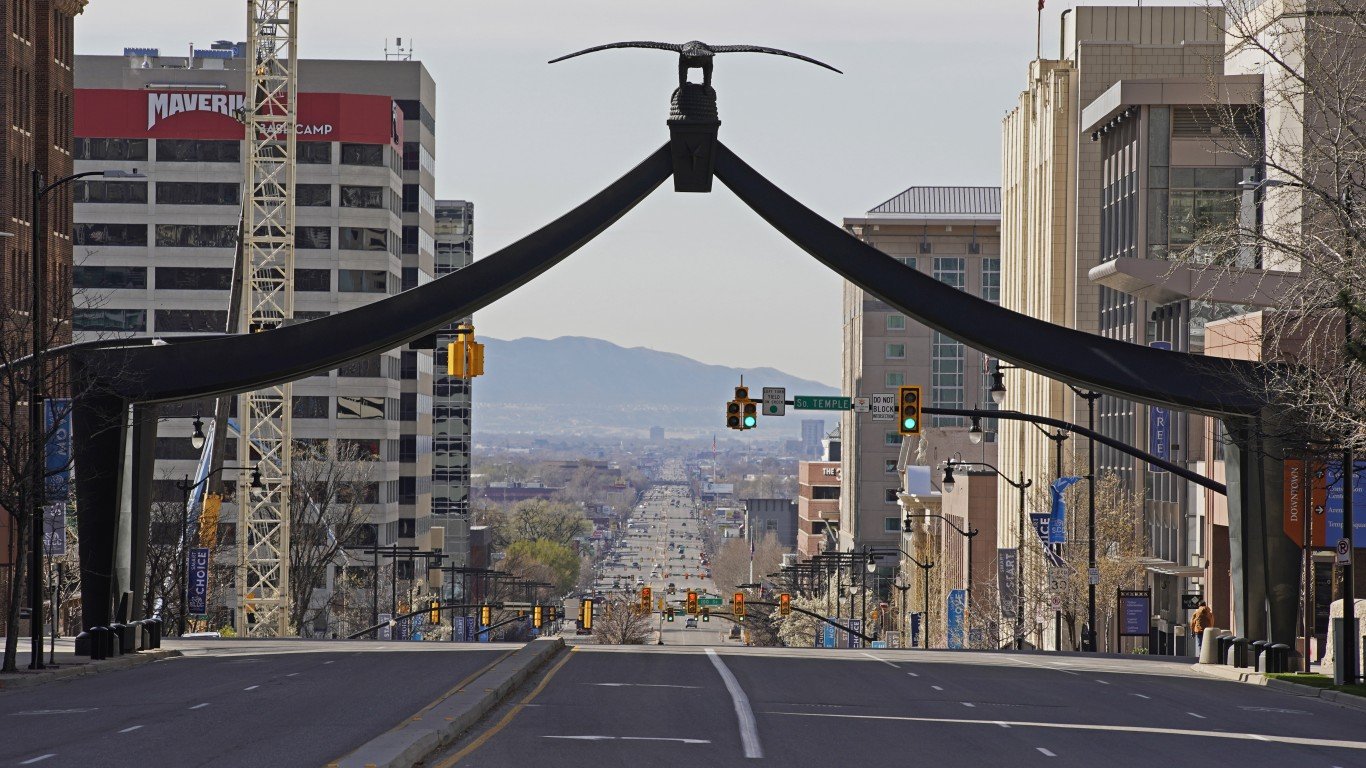
Utah
> Cumulative COVID-19 cases as of June 18: 485 per 100,000 people — 23rd highest (total: 15,344)
> COVID-19-related deaths as of June 18: 5 per 100,000 people — 6th lowest (total: 149)
> Total tests administered as of June 18: 278,692
> Change in trailing 7-day avg. daily cases, June 10 – June 17: 35.1% — 12th smallest increase (295 to 398)
> Population: 3,161,105
The state never issued a statewide stay-at-home order. The stay safe, stay home directive expired on May 1. In-restaurant dining, gyms, and salons can now open. Gatherings of up to 20 people are allowed. Statewide restrictions on elective surgeries and procedures were lifted as of April 21.
Malls and national parks can reopen under tight restrictions. Hours may vary and occupancy might be limited. People are still encouraged to avoid nonessential travel. College campuses may be open for in-person classes with increased cleaning and hygiene regimen.
Most of the state is still in the yellow (or low-risk) phase of reopening. In it, there are no economic activities that are categorically prohibited if people practice social distancing and proper hygiene.
[in-text-ad-2]
Vermont
> Cumulative COVID-19 cases as of June 18: 181 per 100,000 people — 6th lowest (total: 1,135)
> COVID-19-related deaths as of June 18: 9 per 100,000 people — 15th lowest (total: 56)
> Total tests administered as of June 18: 54,745
> Change in trailing 7-day avg. daily cases, June 10 – June 17: -65.7% — 3rd largest decline (15 to 5)
> Population: 626,299
The stay-at-home order expired on May 15. The state of emergency was extended until June 15. Everyone has to work remotely when possible. Retail and lodging businesses have reopened. Hair salons and barbershops can reopen but by appointment and with limits on occupancy. Transactions must be cashless and touchless, and owners must keep a customer log in case contact tracing is needed later. Restaurants and bars have been allowed to open with limited outdoor and indoor seating.
Travel restrictions have been loosened. People in counties in New England and upstate New York with 400 or fewer cases per 1 million people can come to Vermont without having to self-quarantine. Out-of-state visitors can visit Vermont, but they have to complete a 14-day quarantine or a 7-day quarantine if they present a negative test result taken in their home state or in a Vermont lodging. Low-contact sports such as soccer, baseball, and lacrosse can resume after June 15. Crowds cannot be bigger than 25 people.
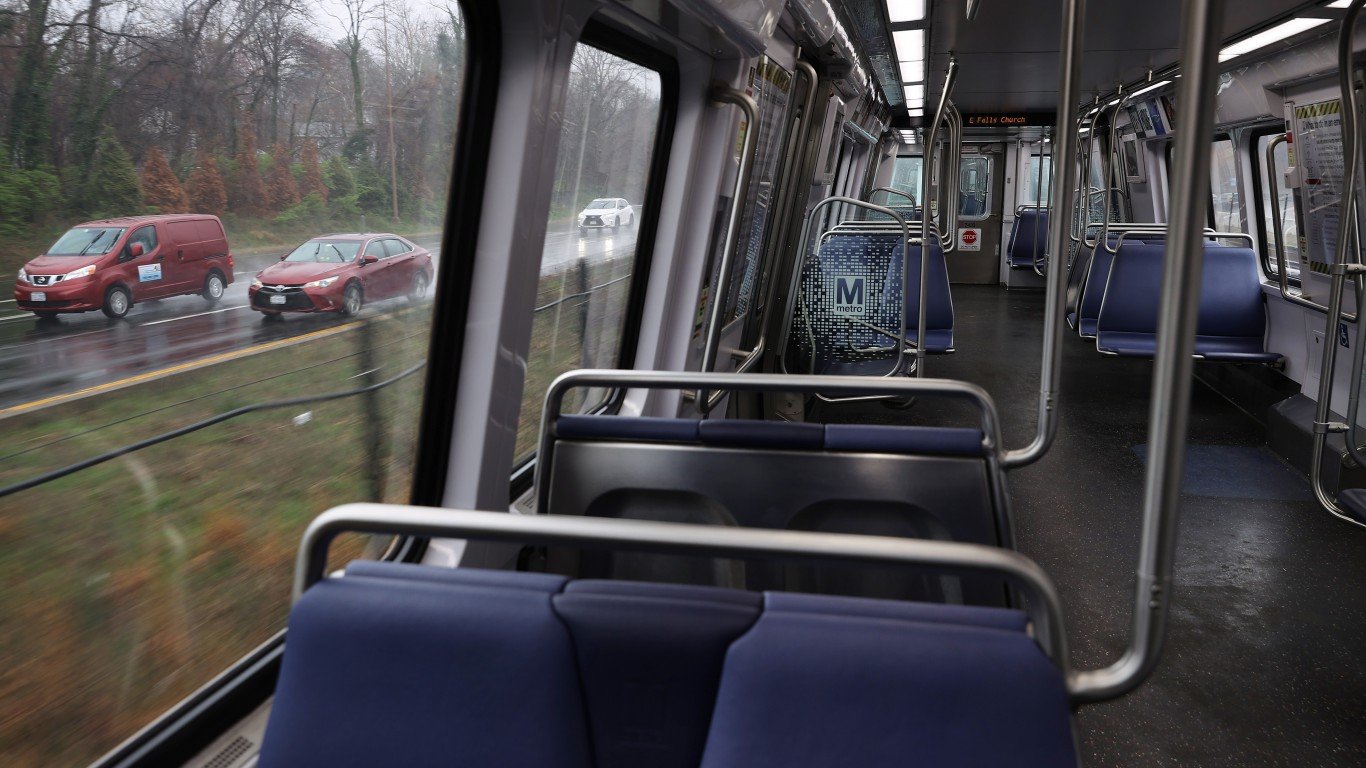
Virginia
> Cumulative COVID-19 cases as of June 18: 660 per 100,000 people — 15th highest (total: 56,238)
> COVID-19-related deaths as of June 18: 19 per 100,000 people — 21st highest (total: 1,586)
> Total tests administered as of June 18: 499,599
> Change in trailing 7-day avg. daily cases, June 10 – June 17: -57.0% — 4th largest decline (1,194 to 514)
> Population: 8,517,685
A stay-at-home order was in effect until June 10. All counties were allowed to begin reopening as of May 28. The state is currently in phase 2 of reopening. Restaurants can provide indoor dining at 50% occupancy, and fitness centers can open indoor areas at 30% occupancy. Museums, zoos, aquariums, gardens, and outdoor sporting and performance venues can open with restrictions. Swimming pools may expand operations to indoor and outdoor exercise. Diving and swimming instruction can resume as well in phase 2.
[in-text-ad]
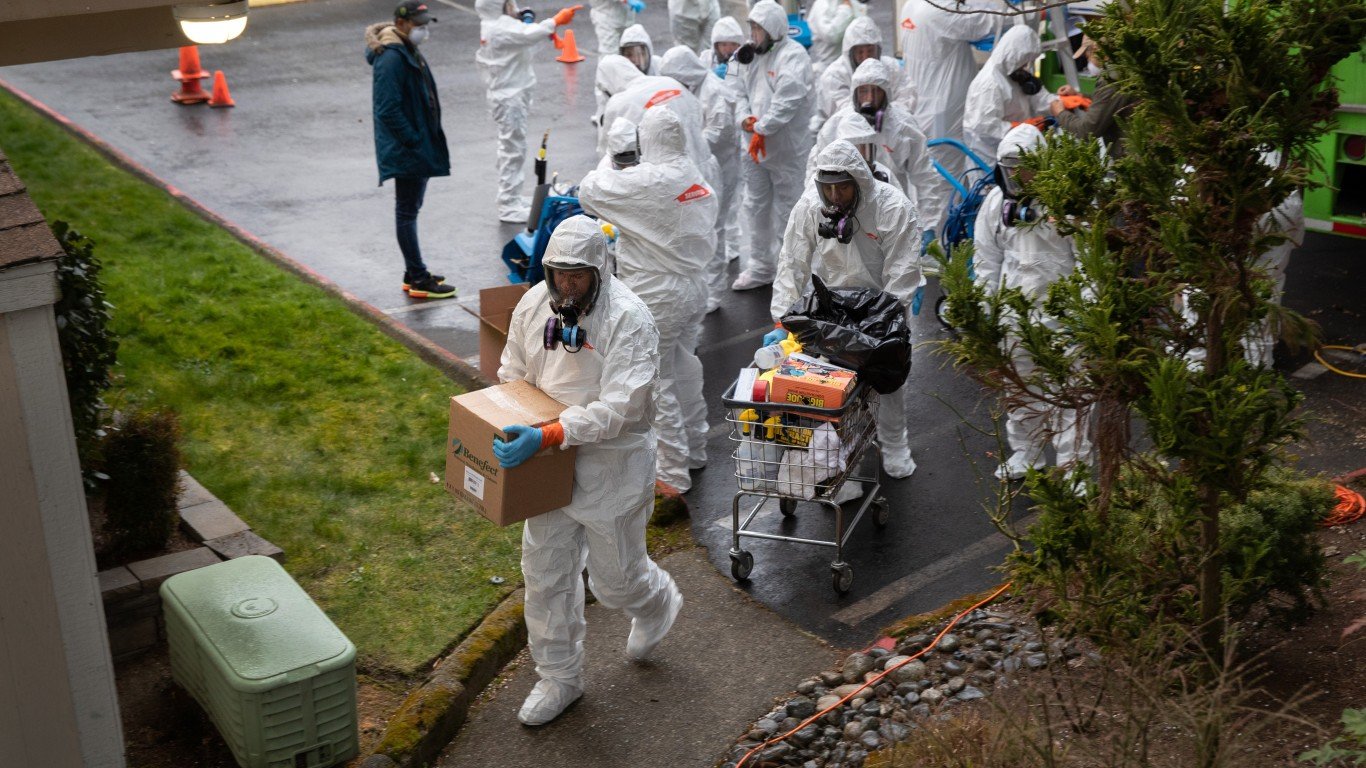
Washington
> Cumulative COVID-19 cases as of June 18: 355 per 100,000 people — 14th lowest (total: 26,784)
> COVID-19-related deaths as of June 18: 16 per 100,000 people — 24th highest (total: 1,226)
> Total tests administered as of June 18: 435,016
> Change in trailing 7-day avg. daily cases, June 10 – June 17: -0.9% — the smallest decline (314 to 311)
> Population: 7,535,591
A stay-at-home, stay healthy order was in effect until May 31 and has been replaced since by a Safe Start reopening plan. Most of the state’s counties are in phase 2 of reopening, in which restaurants, salons, and stores can open in a limited capacity. In-person real estate activities such as sales and appraisals with up to three people and fitness and training services have been allowed to resume since May 19 in counties that are in phase 2 of reopening.
As of June 11, there were three counties in phase 1, 23 counties in phase 2, and 10 counties in phase 3. In phase 3, people are allowed to gather outside in groups of no more than 50 people, recreational facilities can open at 50% capacity, nonessential travel can resume, restaurants can expand capacity to 75%, bars can open at 25% capacity, and movie theaters can open at 50% capacity.
West Virginia
> Cumulative COVID-19 cases as of June 18: 131 per 100,000 people — 4th lowest (total: 2,358)
> COVID-19-related deaths as of June 18: 5 per 100,000 people — 7th lowest (total: 88)
> Total tests administered as of June 18: 138,256
> Change in trailing 7-day avg. daily cases, June 10 – June 17: -24.4% — 11th largest decline (32 to 24)
> Population: 1,805,832
The stay-at-home order expired on May 3. Residents are encouraged but not required to stay inside. State park cabins, museums, and zoos have been allowed to reopen. Bars can serve at 50% capacity. Spas and massage businesses are open. So are swimming pools, bowling alleys, pool halls, roller rinks, other indoor amusement venues, and movie theaters. Social gatherings in public are now limited to 100 people, up from 25.
Low-contact outdoor youth sports and little league organizations can now resume practices, and sports games can start after June 22. Sports venues and facilities can open as well. Counties can organize outdoor in-person graduation ceremonies after June 22 as well. Open-air concerts, fairs, and festivals will be allowed to take place after July 1.
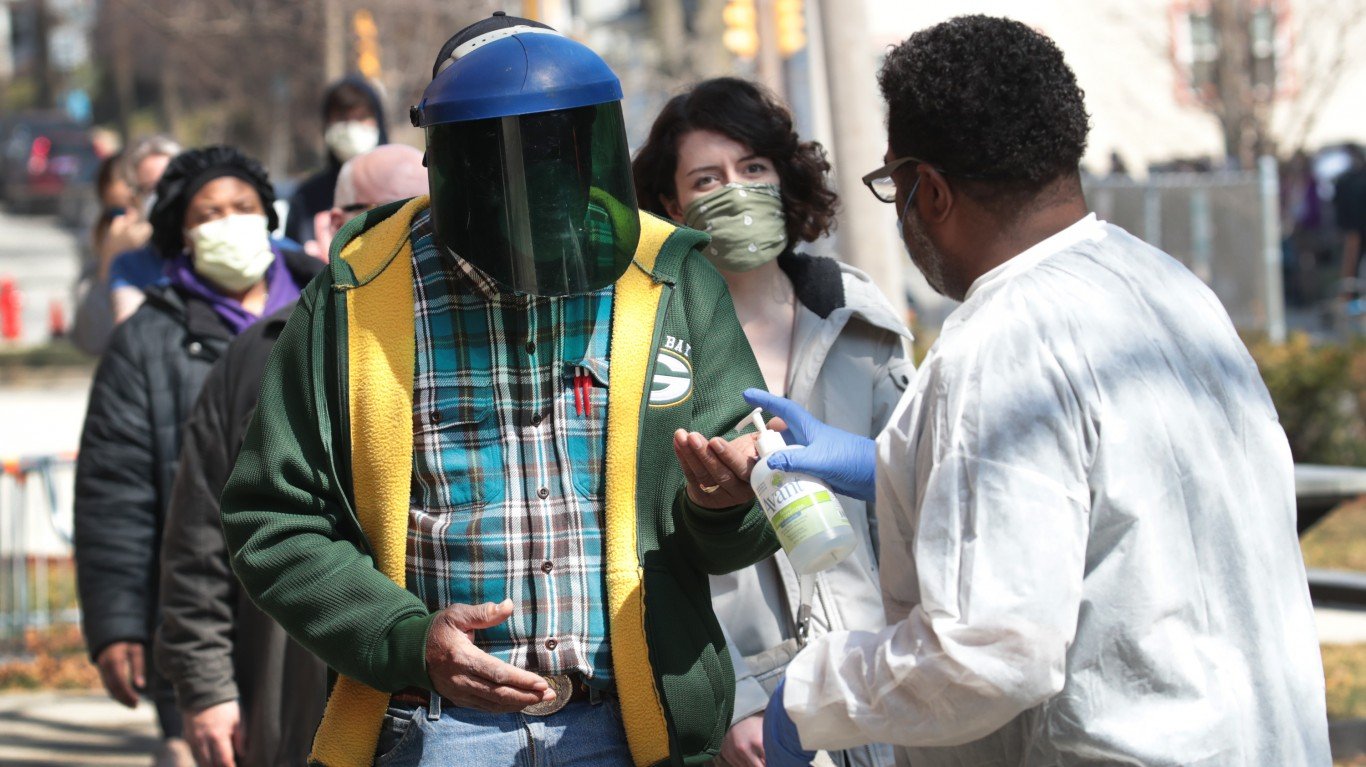
Wisconsin
> Cumulative COVID-19 cases as of June 18: 403 per 100,000 people — 21st lowest (total: 23,454)
> COVID-19-related deaths as of June 18: 12 per 100,000 people — 22nd lowest (total: 712)
> Total tests administered as of June 18:
> Change in trailing 7-day avg. daily cases, June 10 – June 17: -15.1% — 7th smallest decline (313 to 266)
> Population: 5,813,568
A stay-at-home order was supposed to be in effect until May 26, but the state’s Supreme Court struck it down on May 13. All restrictions were then lifted. Some districts have imposed their own stay-at-home orders, though most have already lapsed.
[in-text-ad-2]
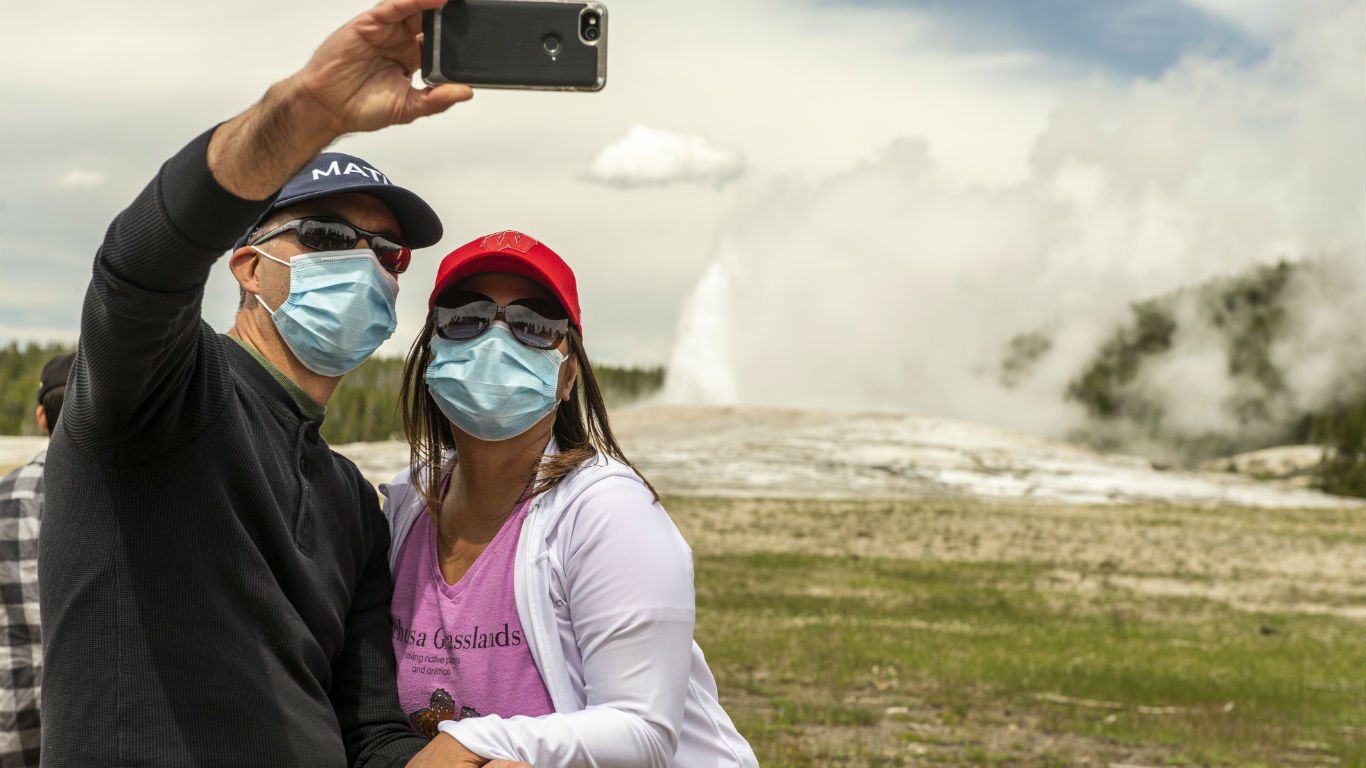
Wyoming
> Cumulative COVID-19 cases as of June 18: 193 per 100,000 people — 7th lowest (total: 1,114)
> COVID-19-related deaths as of June 18: 3 per 100,000 people — 4th lowest (total: 18)
> Total tests administered as of June 18: 34,190
> Change in trailing 7-day avg. daily cases, June 10 – June 17: 116.4% — 3rd largest increase (8 to 17)
> Population: 577,737
The state never issued a statewide stay-at-home order. Movie theaters and performance venues can reopen with no more than 25 people. Roads, hiking trails, and rock climbing routes at the popular Devil’s Tower National Monument are now open to the public, though services are limited.
Outdoor gatherings of up to 250 people have been allowed since June 1, but people must practice social distancing. Indoor gatherings of up to 250 people are now allowed as well. Schools, community colleges, the University of Wyoming and other educational institutions can resume in-person instruction, but fitness classes cannot be of no more than 50 people.
Child care facilities resumed normal operations with unlimited class sizes on June 15. Fitness class limit is now 50 people. Personal care services no longer have to operate by appointment only.
Essential Tips for Investing: Sponsored
A financial advisor can help you understand the advantages and disadvantages of investment properties. Finding a qualified financial advisor doesn’t have to be hard. SmartAsset’s free tool matches you with up to three financial advisors who serve your area, and you can interview your advisor matches at no cost to decide which one is right for you. If you’re ready to find an advisor who can help you achieve your financial goals, get started now.
Investing in real estate can diversify your portfolio. But expanding your horizons may add additional costs. If you’re an investor looking to minimize expenses, consider checking out online brokerages. They often offer low investment fees, helping you maximize your profit.
Thank you for reading! Have some feedback for us?
Contact the 24/7 Wall St. editorial team.
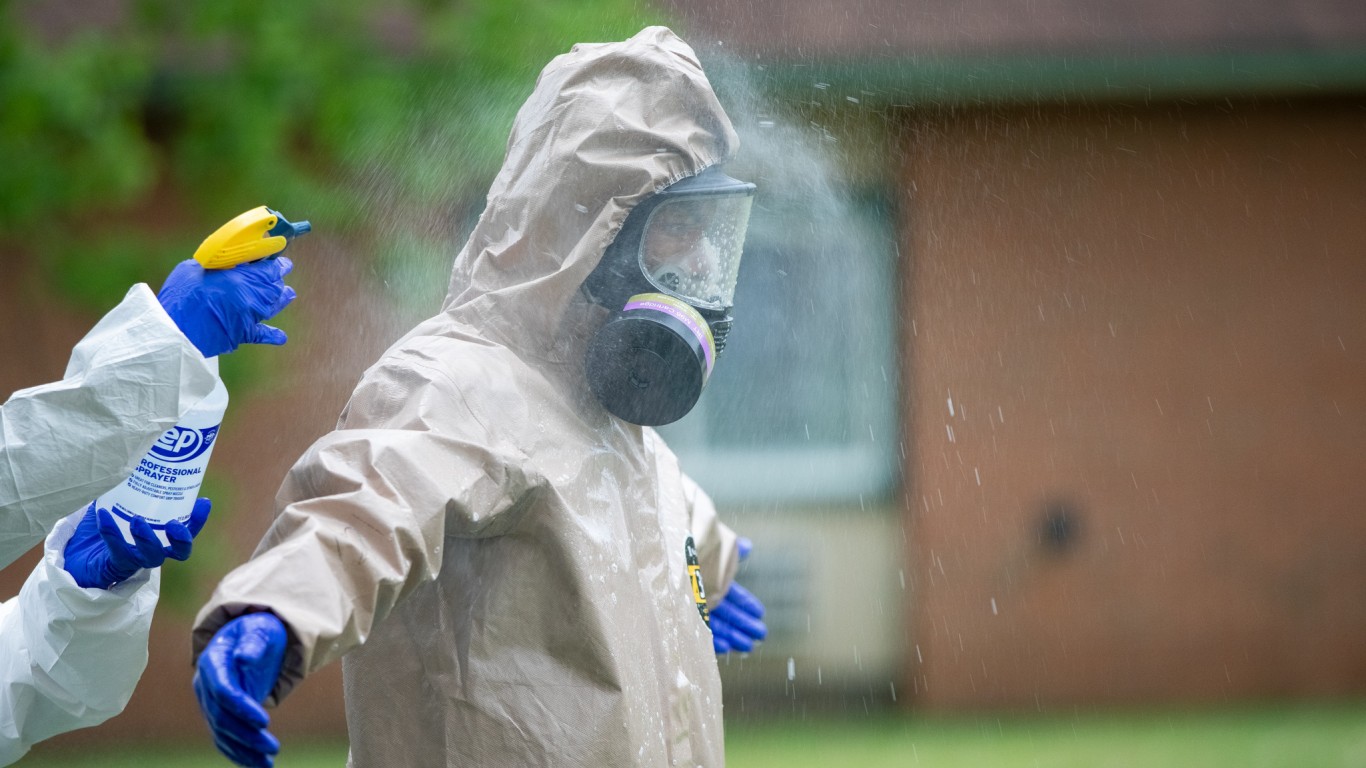
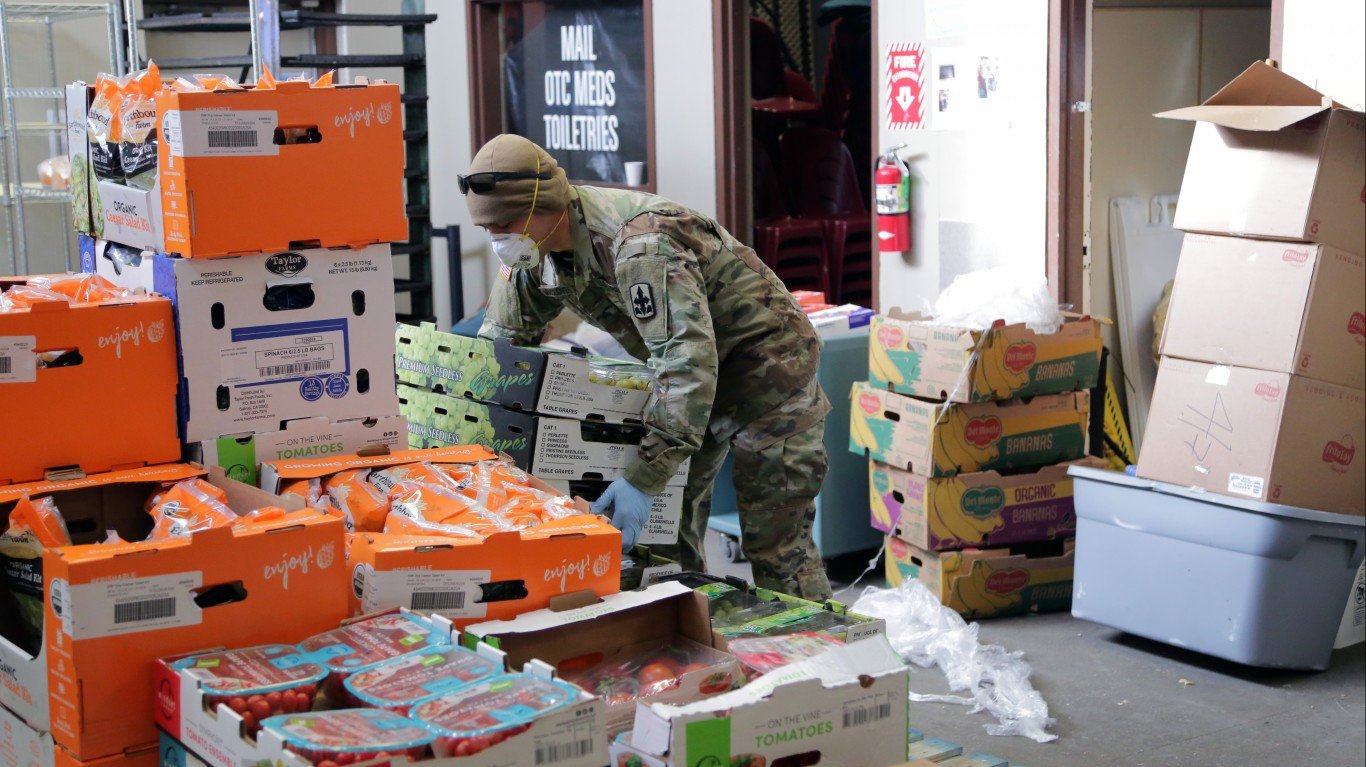
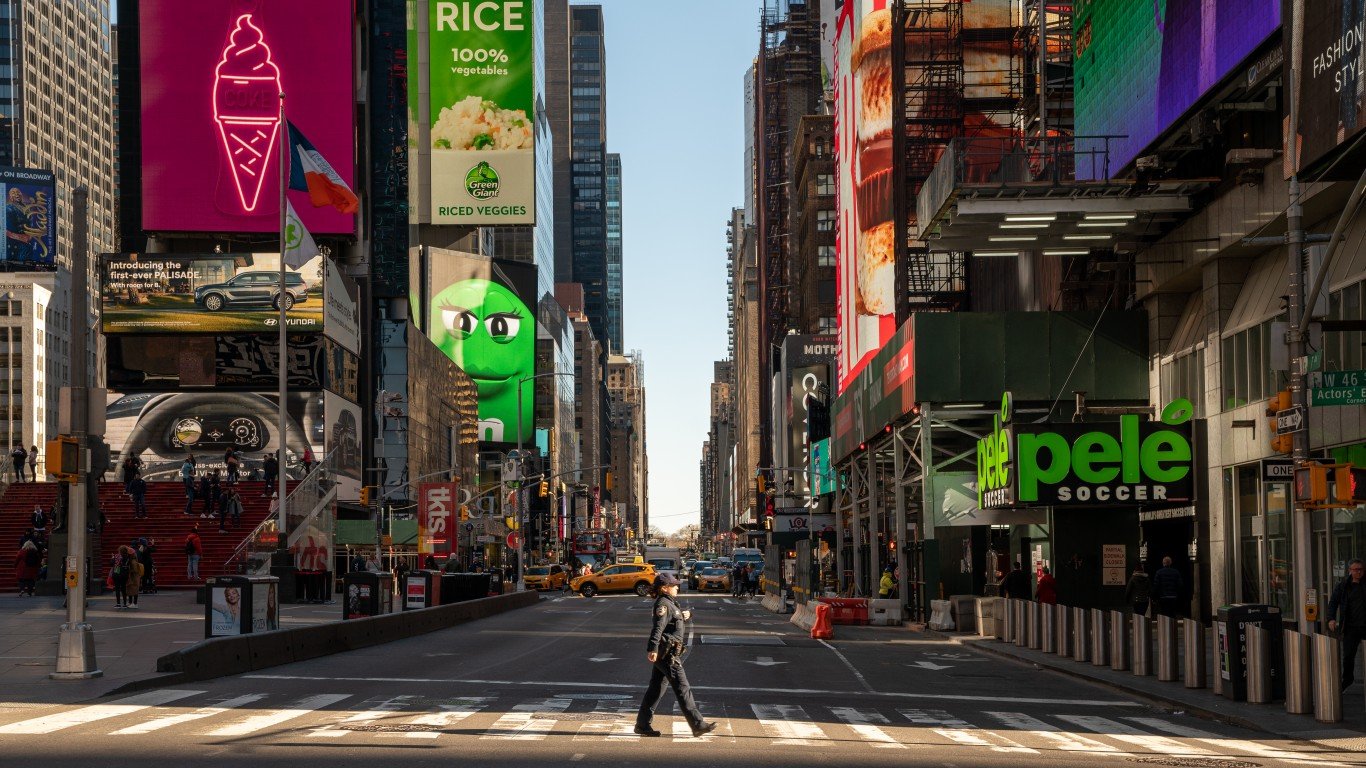 24/7 Wall St.
24/7 Wall St.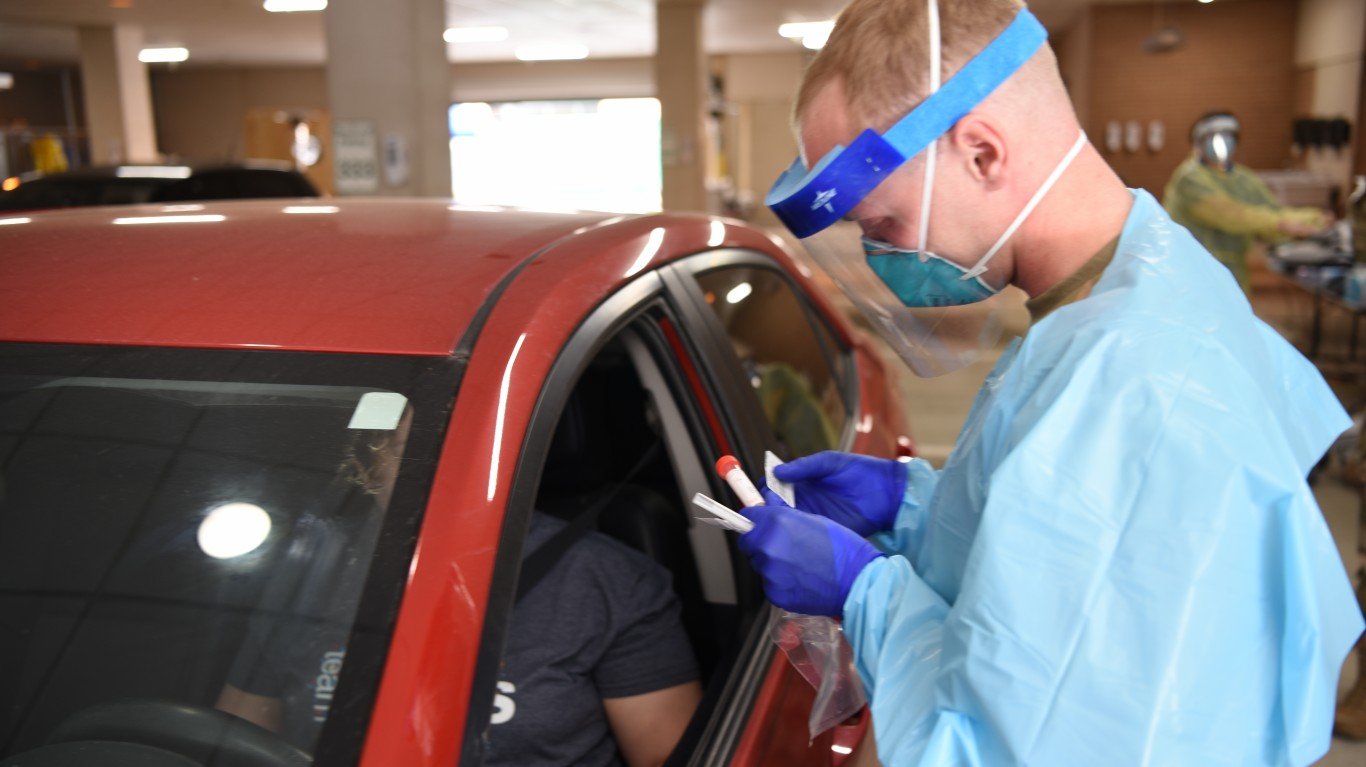
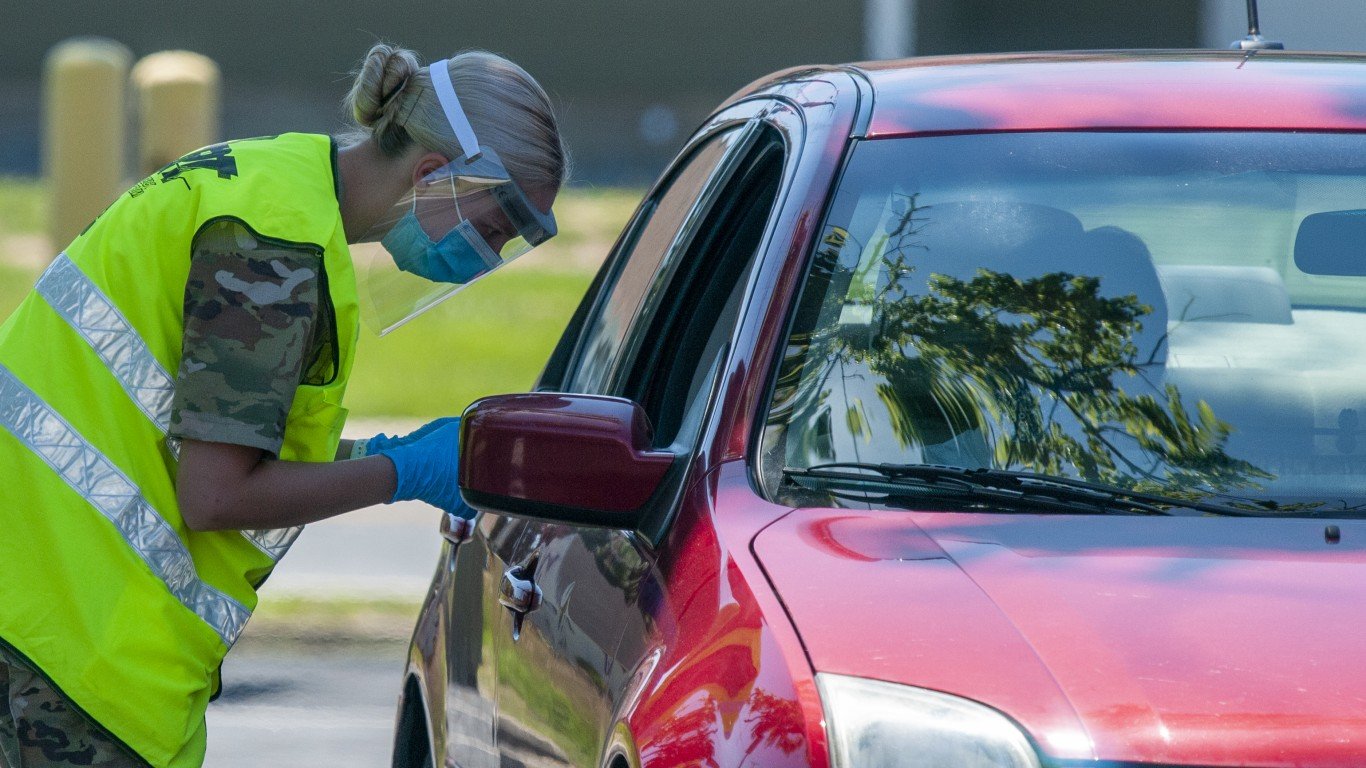

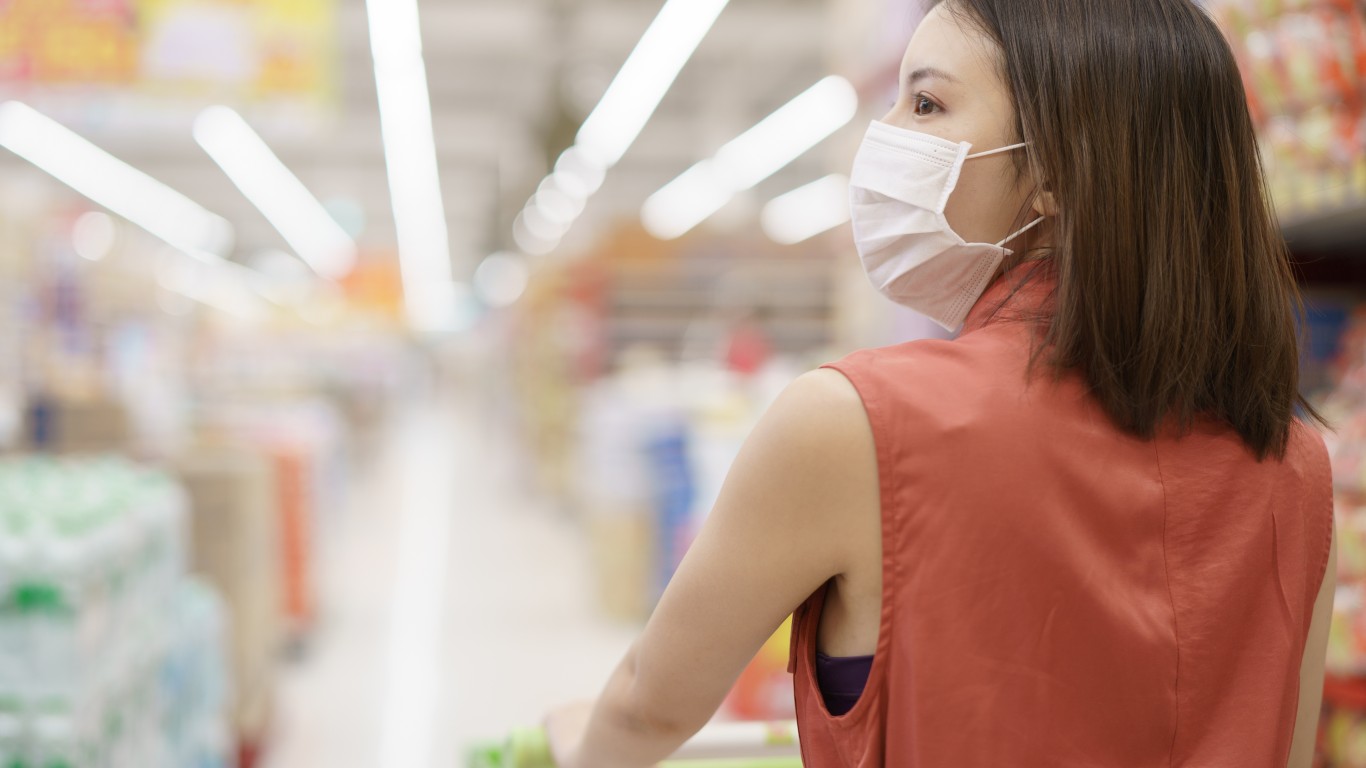 24/7 Wall St.
24/7 Wall St.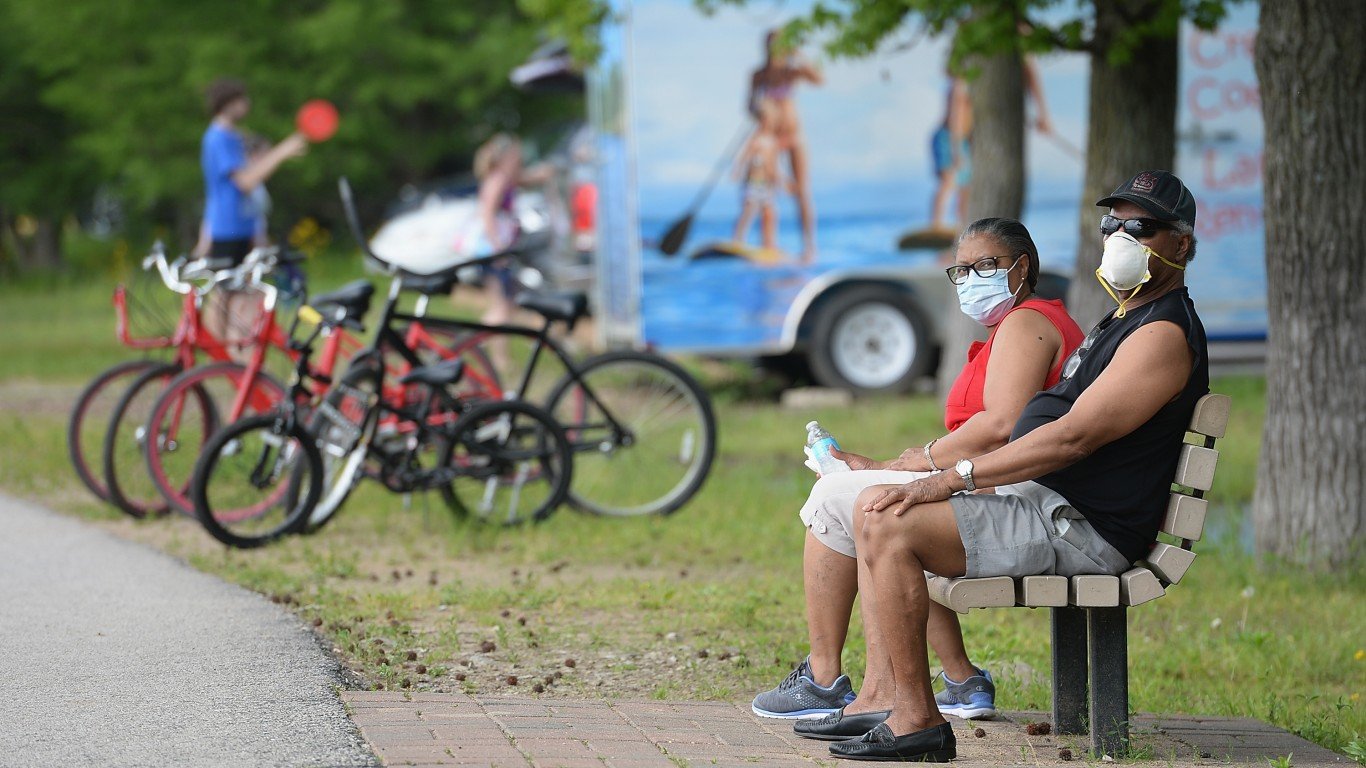 24/7 Wall St.
24/7 Wall St.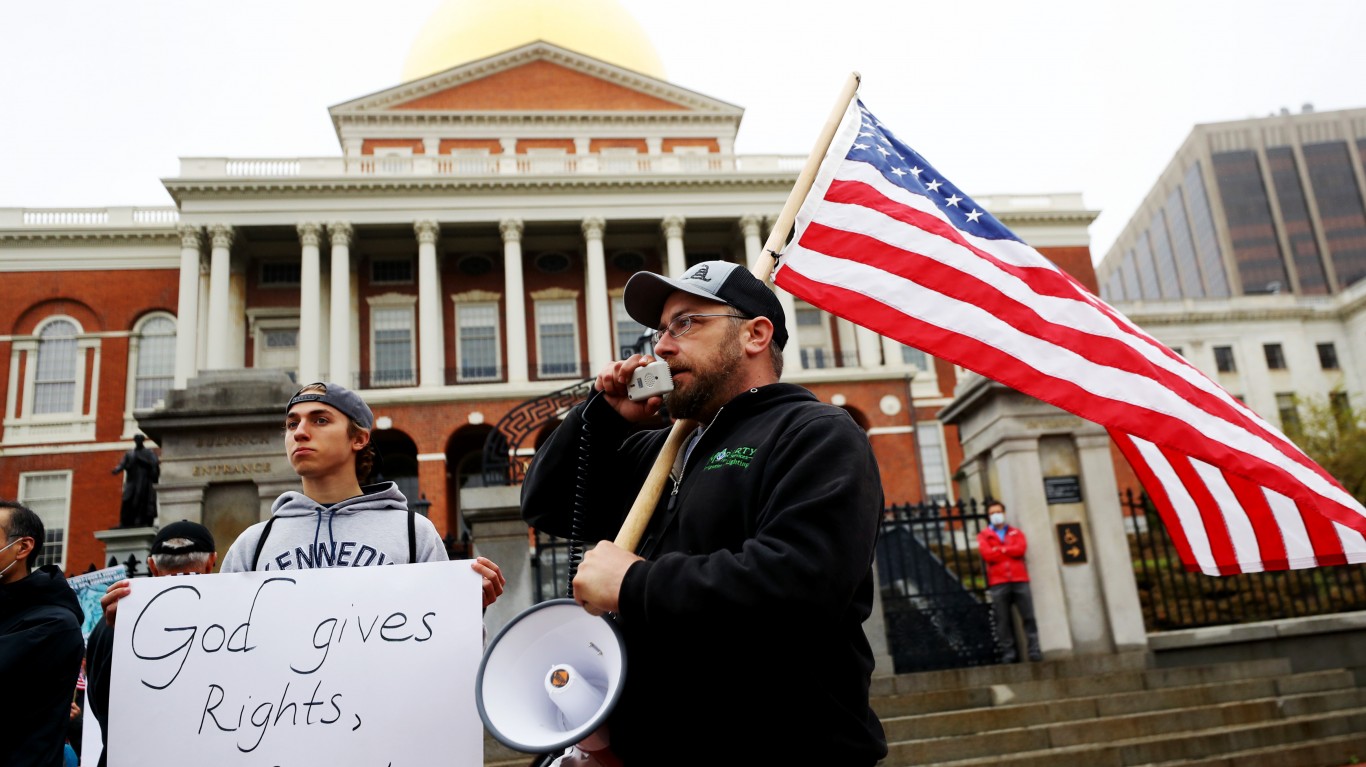 24/7 Wall St.
24/7 Wall St.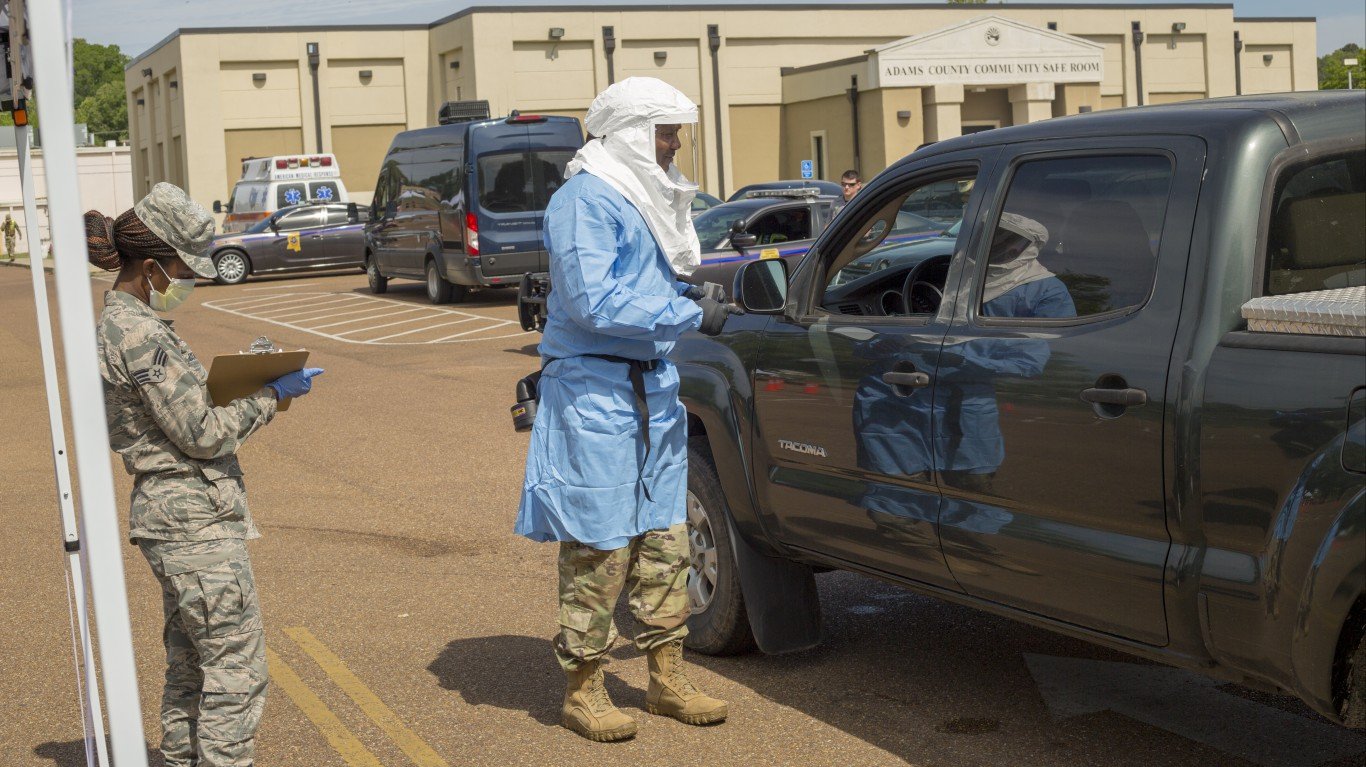

 24/7 Wall St.
24/7 Wall St.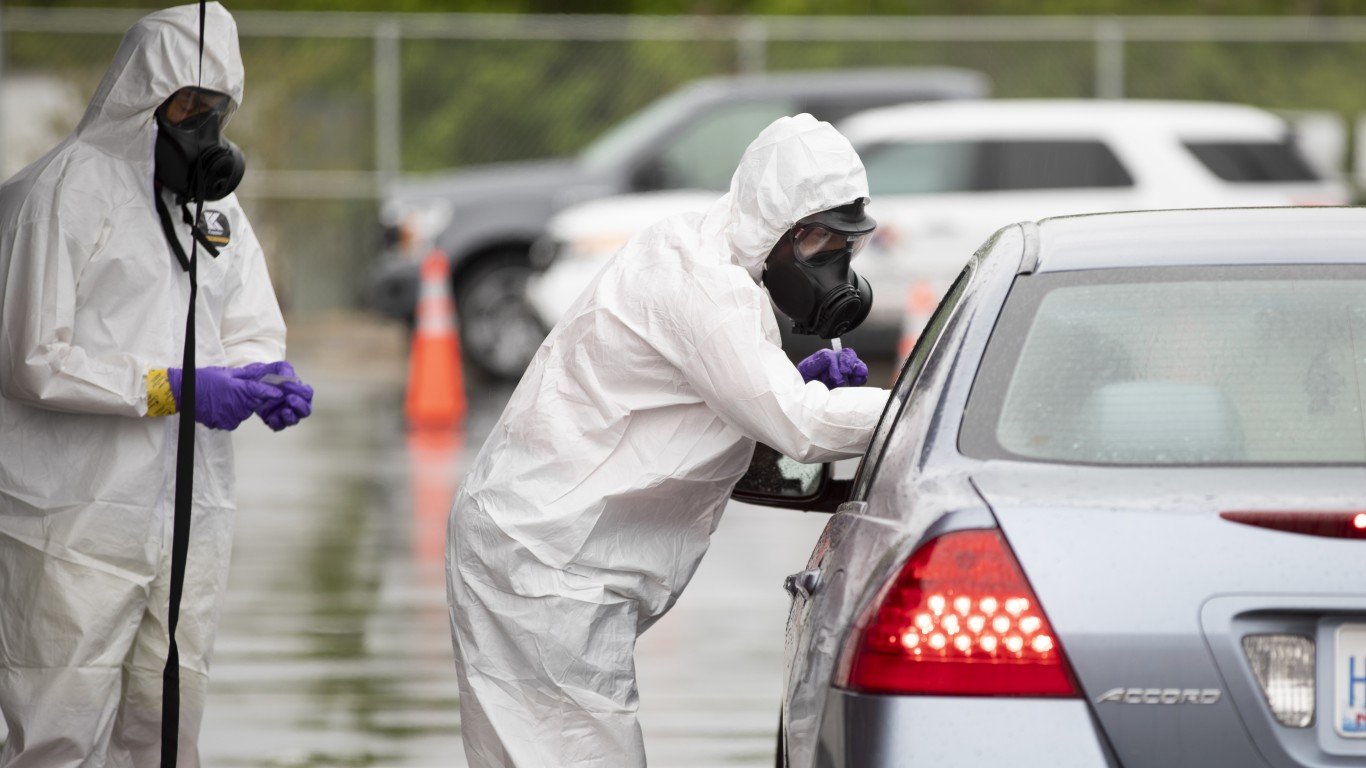
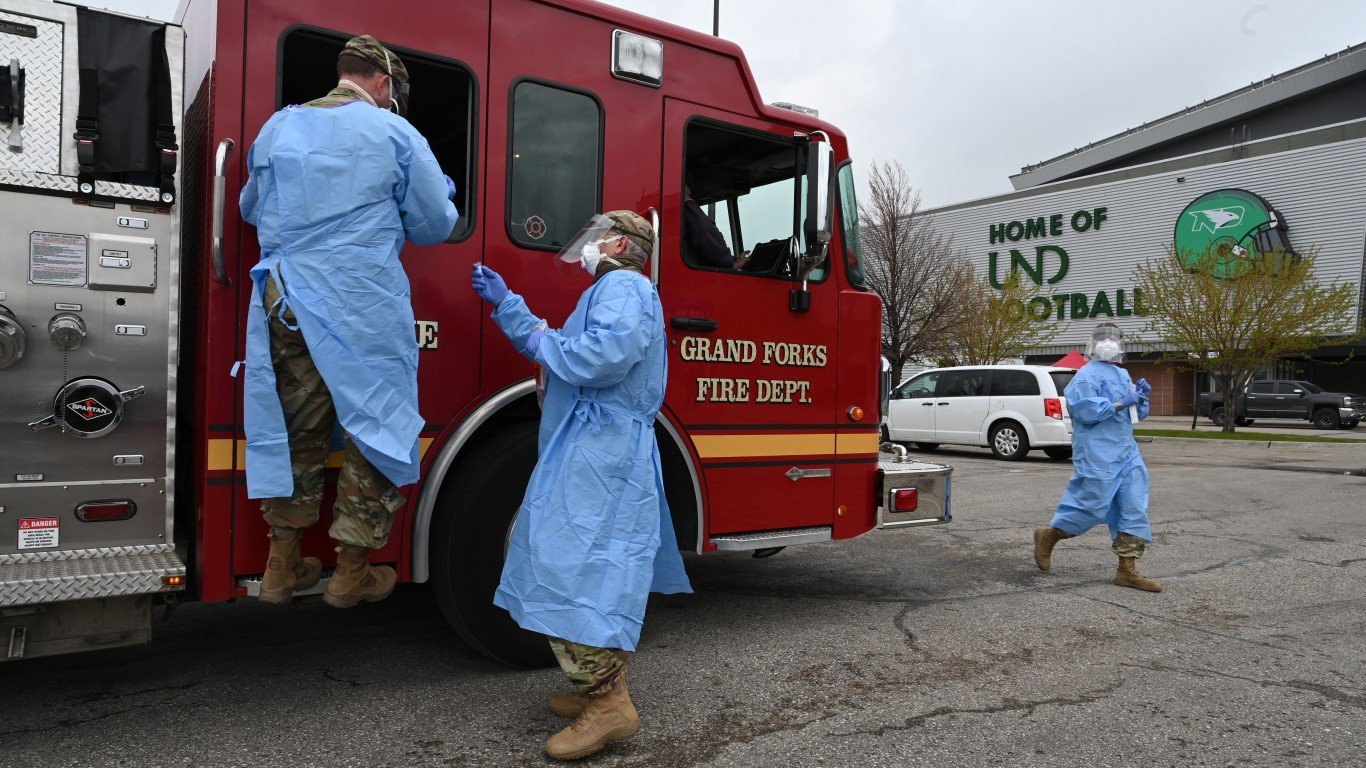
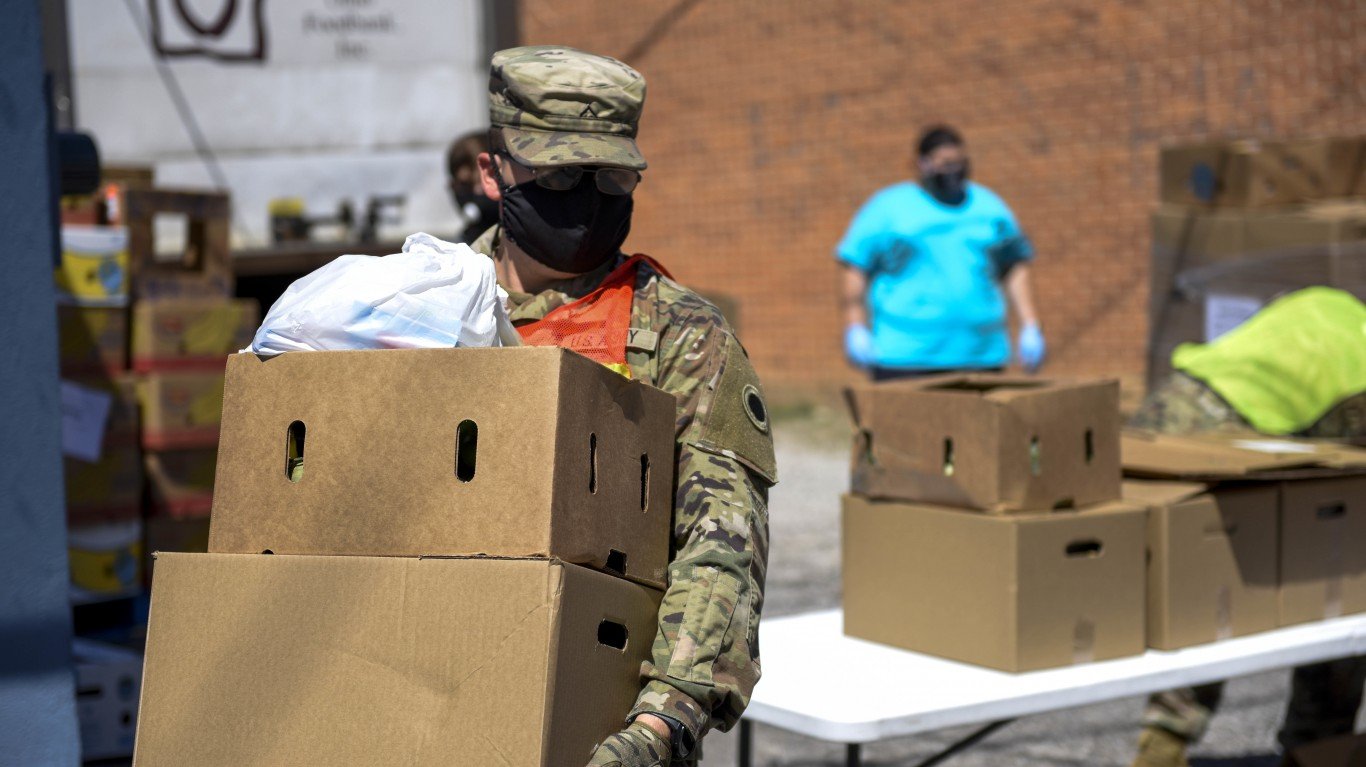
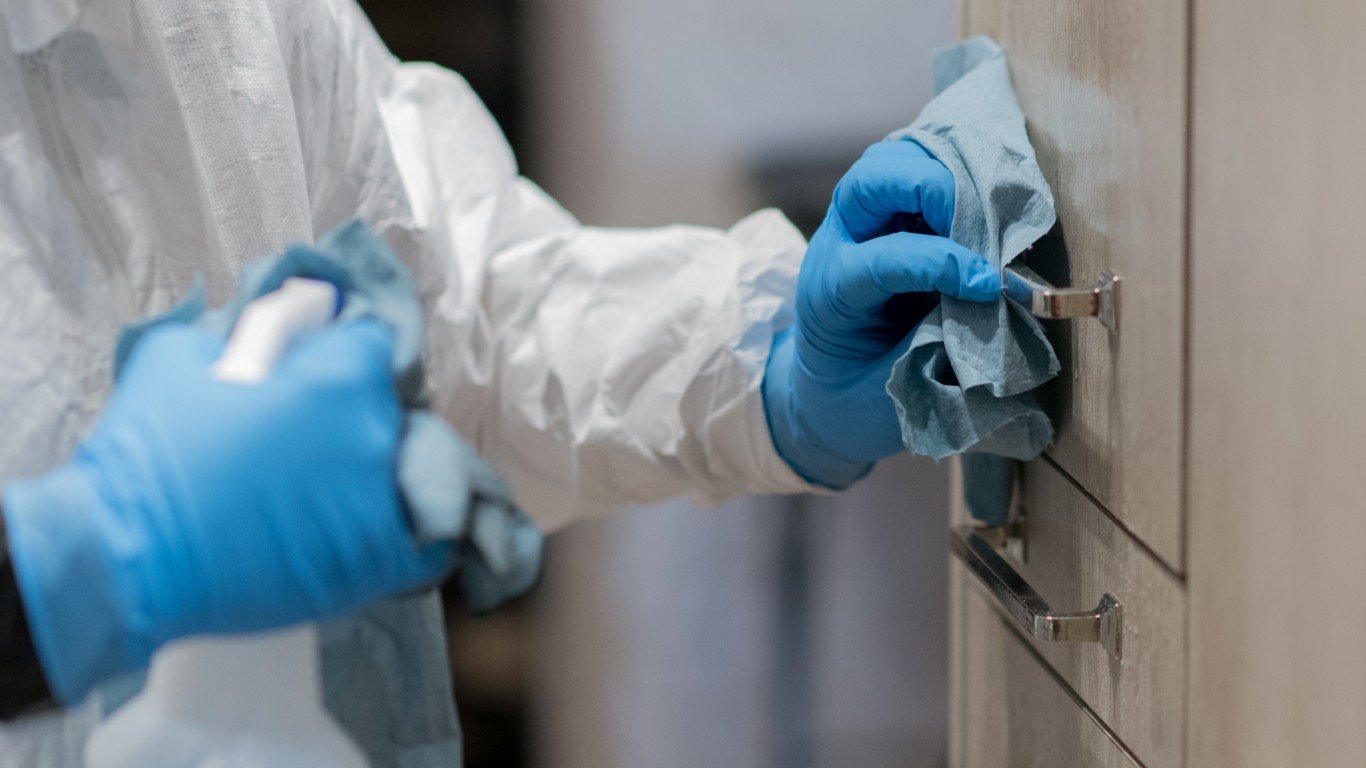
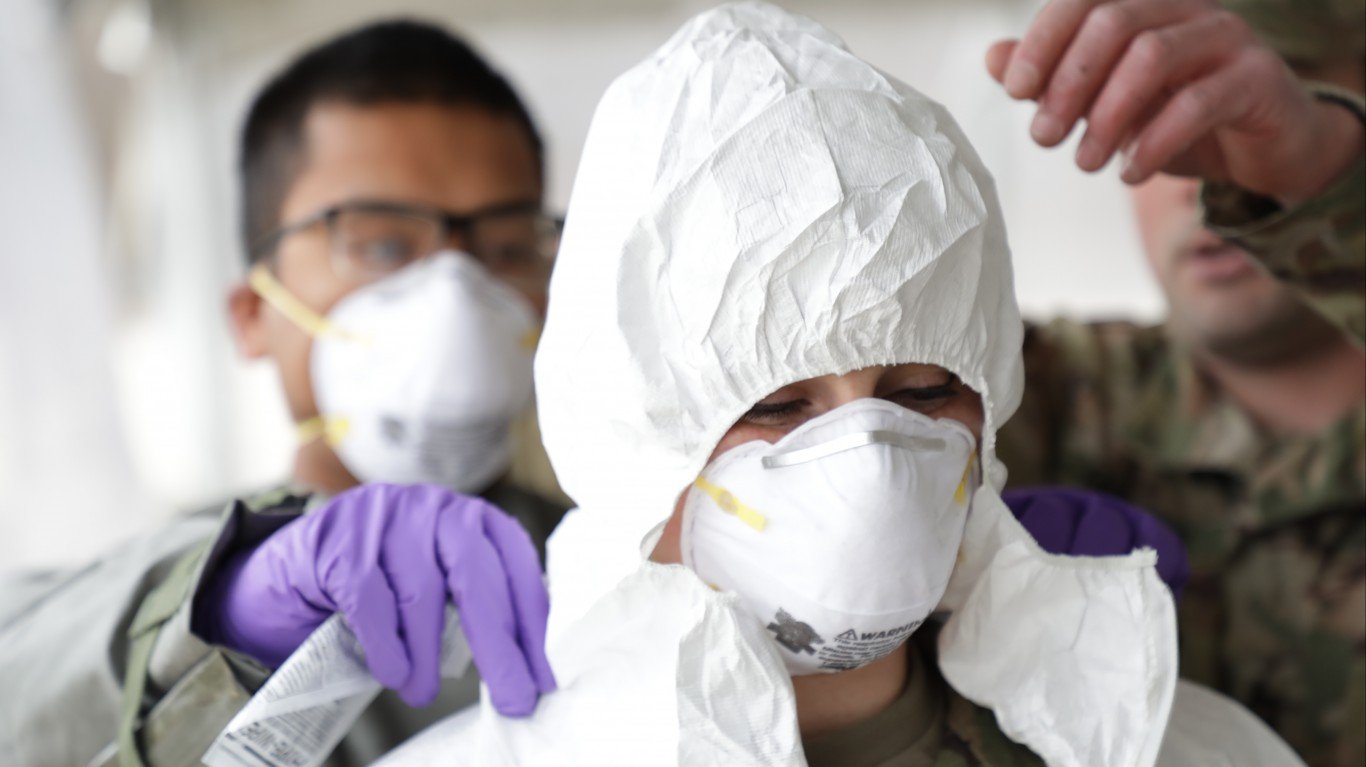
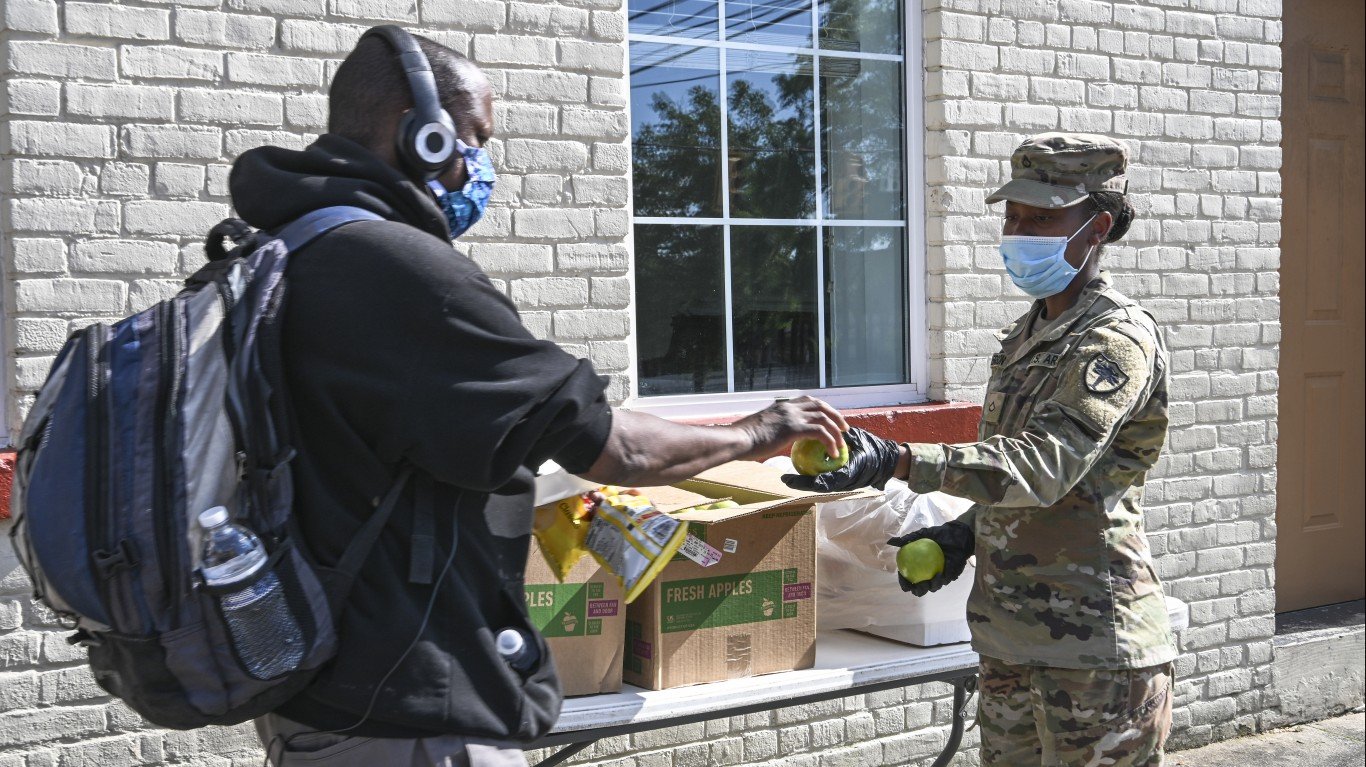
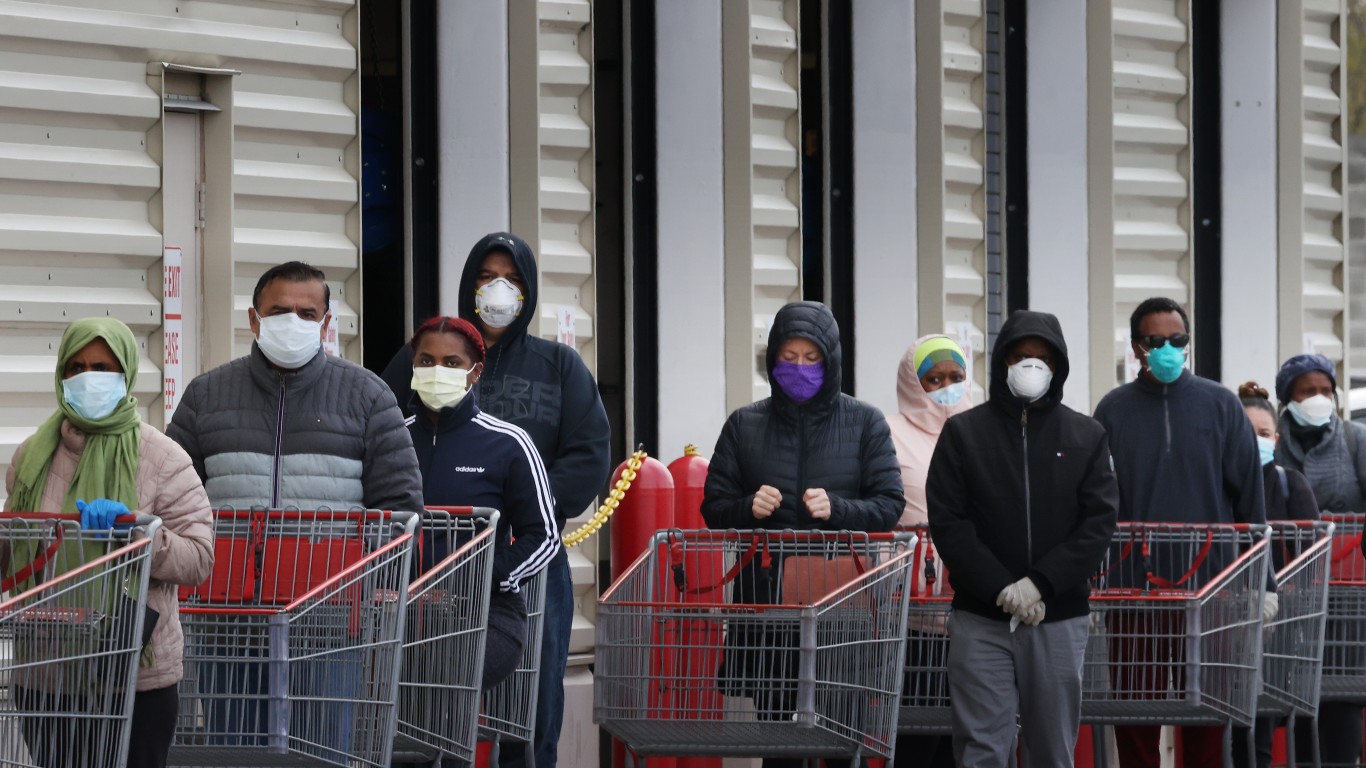 24/7 Wall St.
24/7 Wall St.